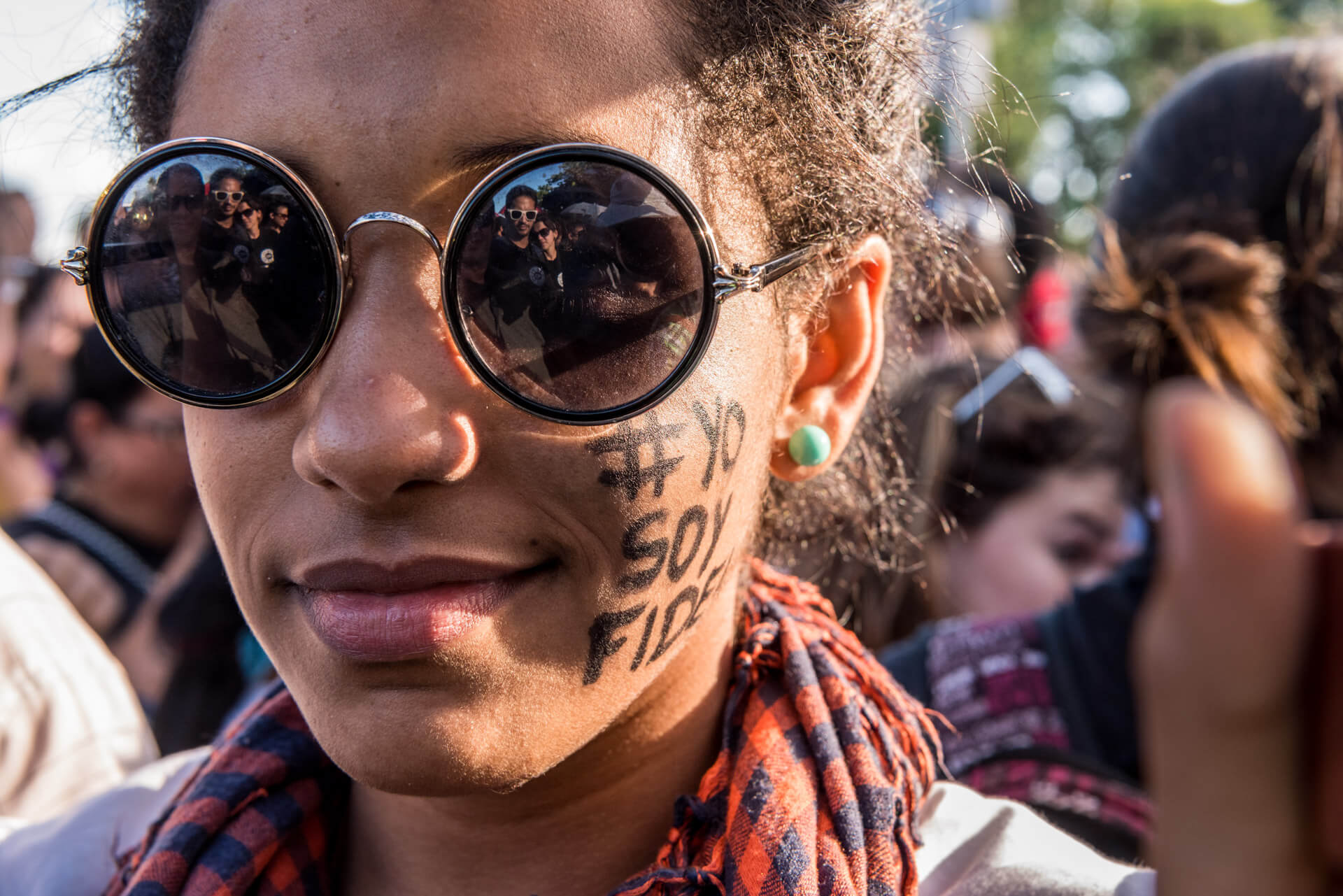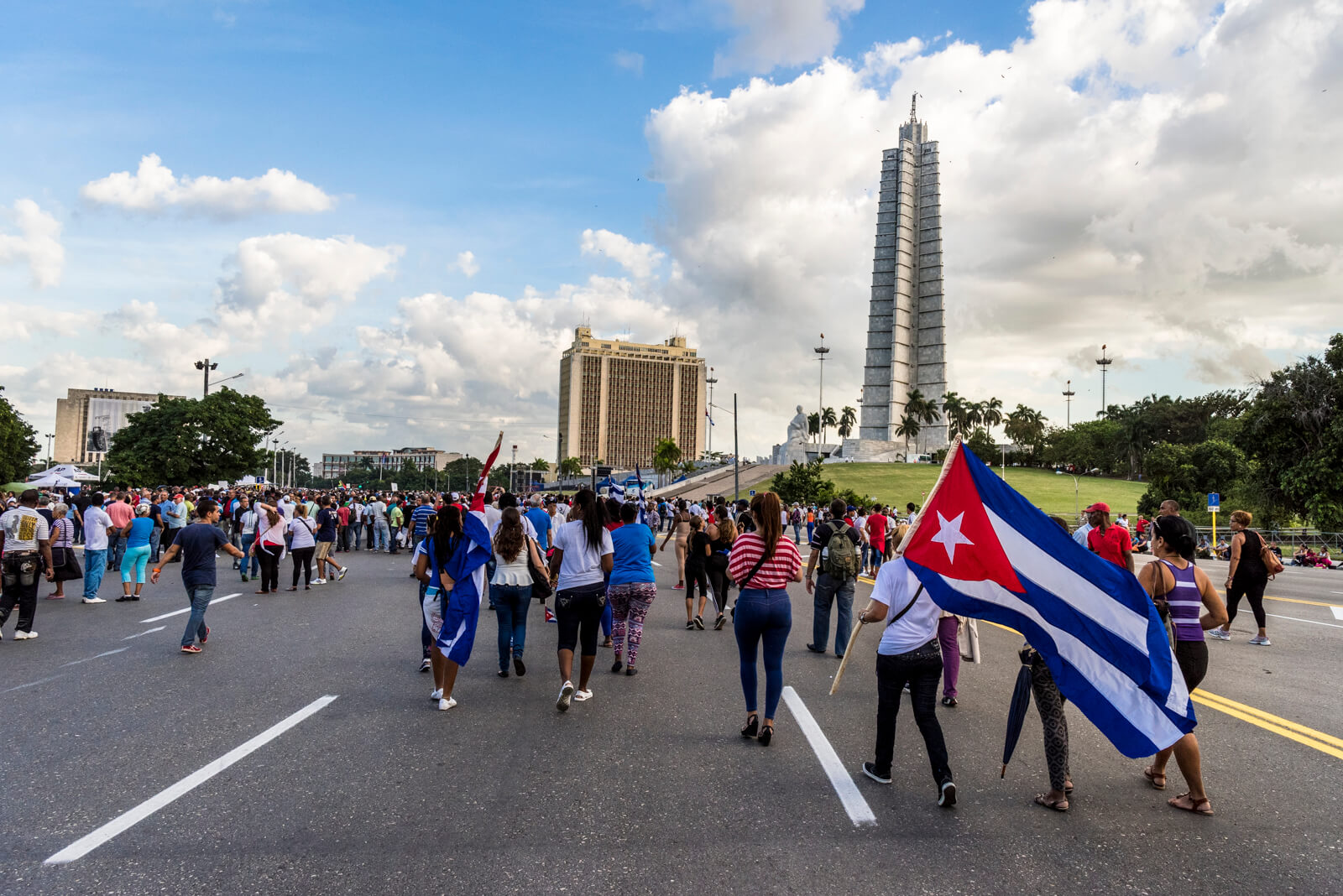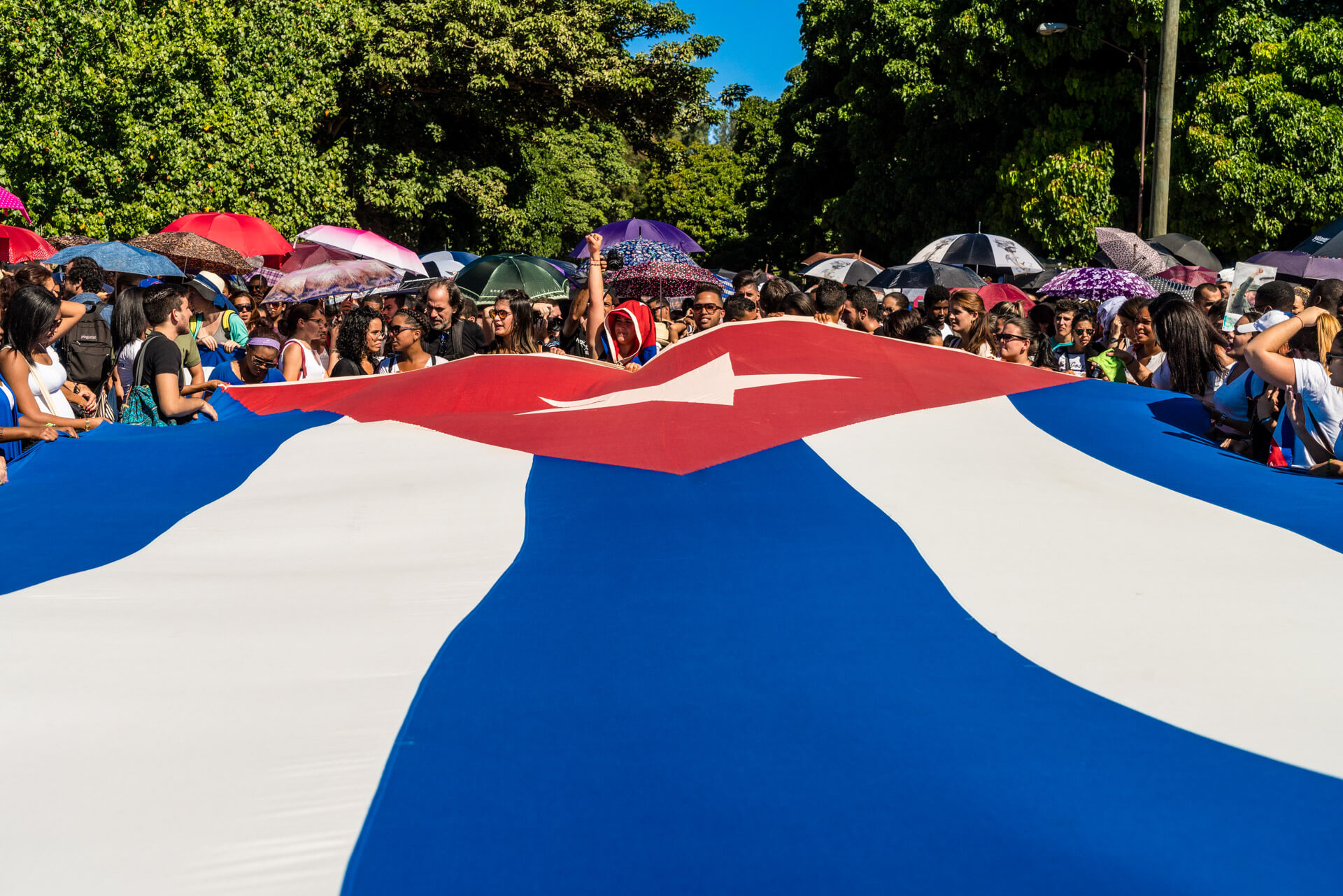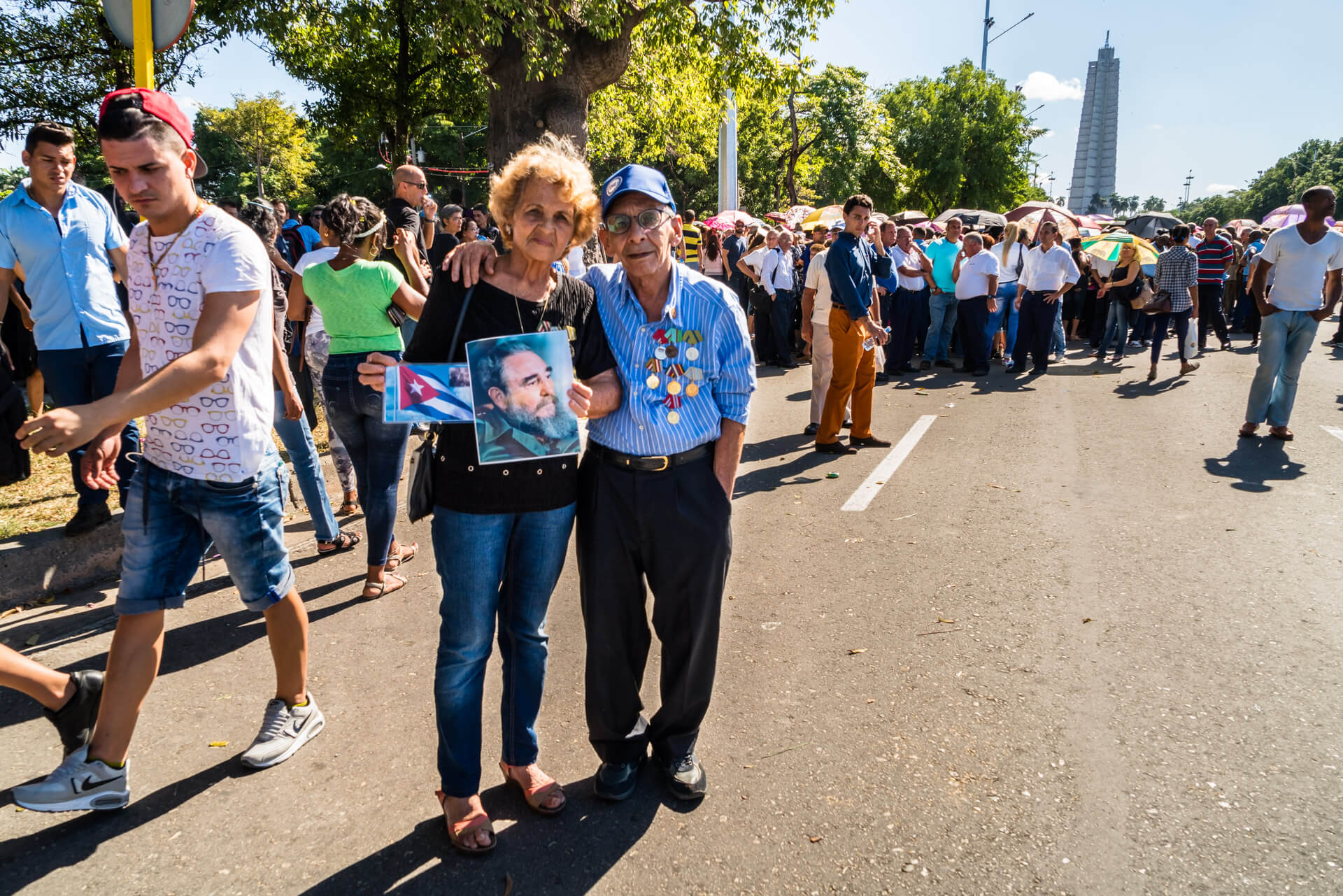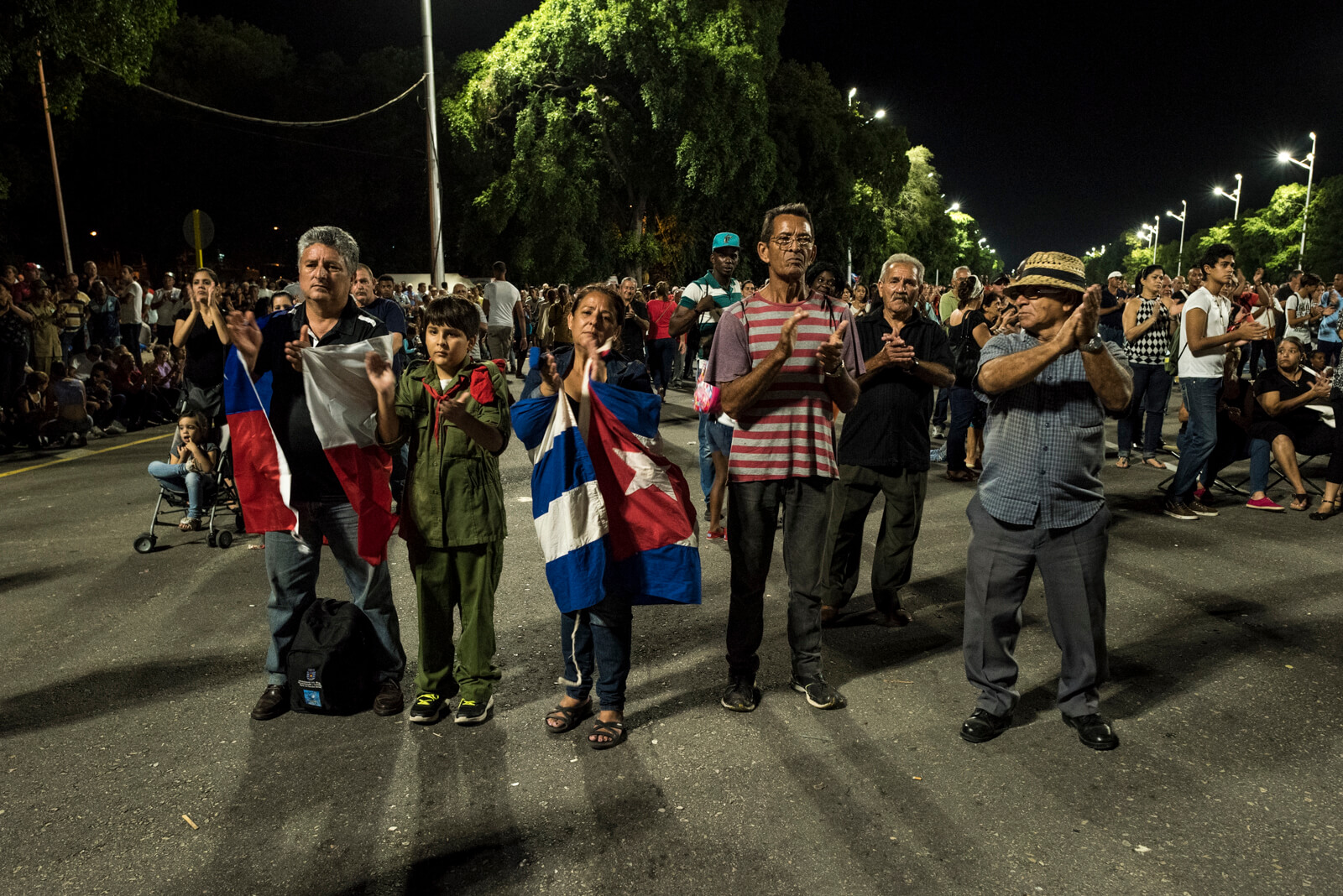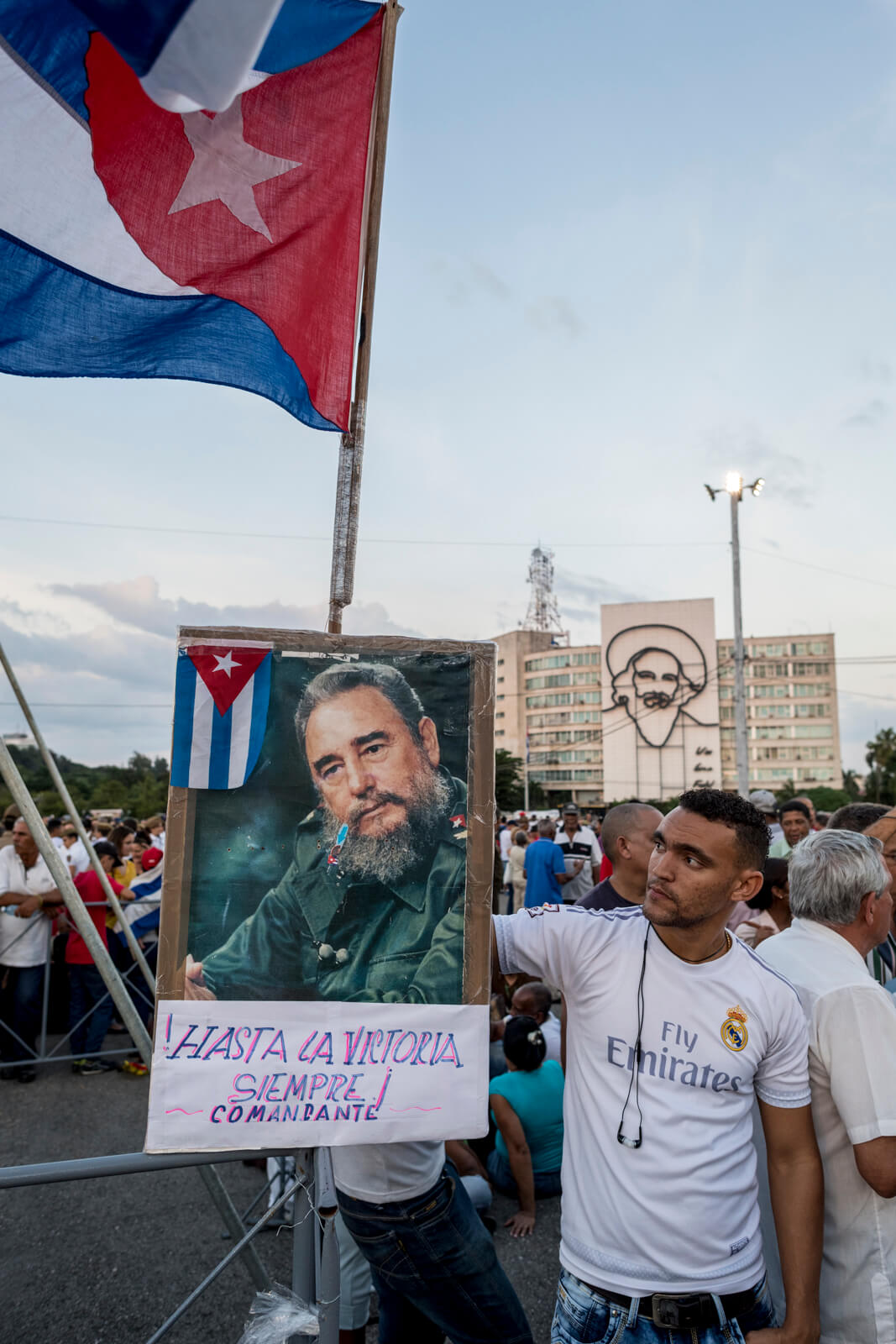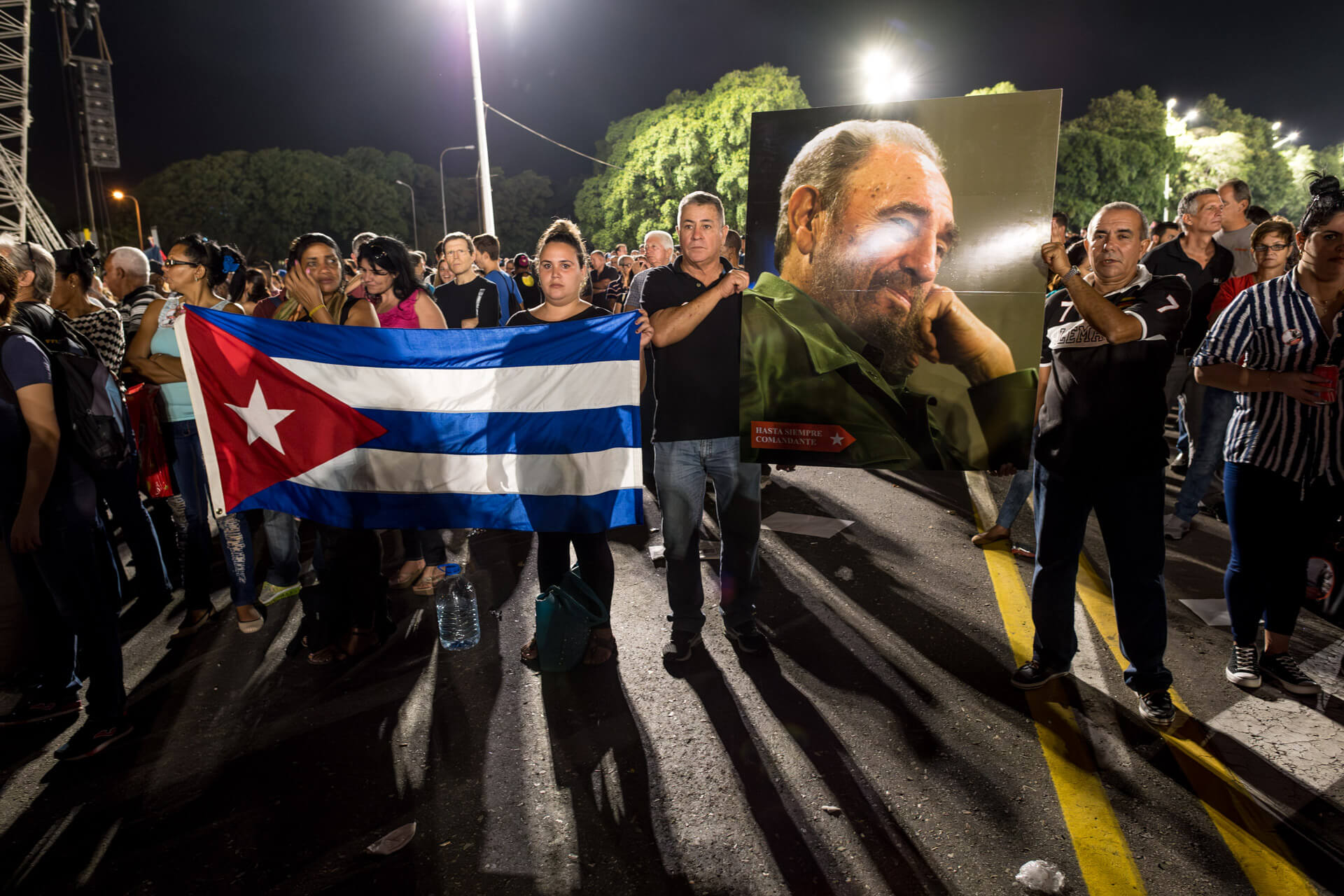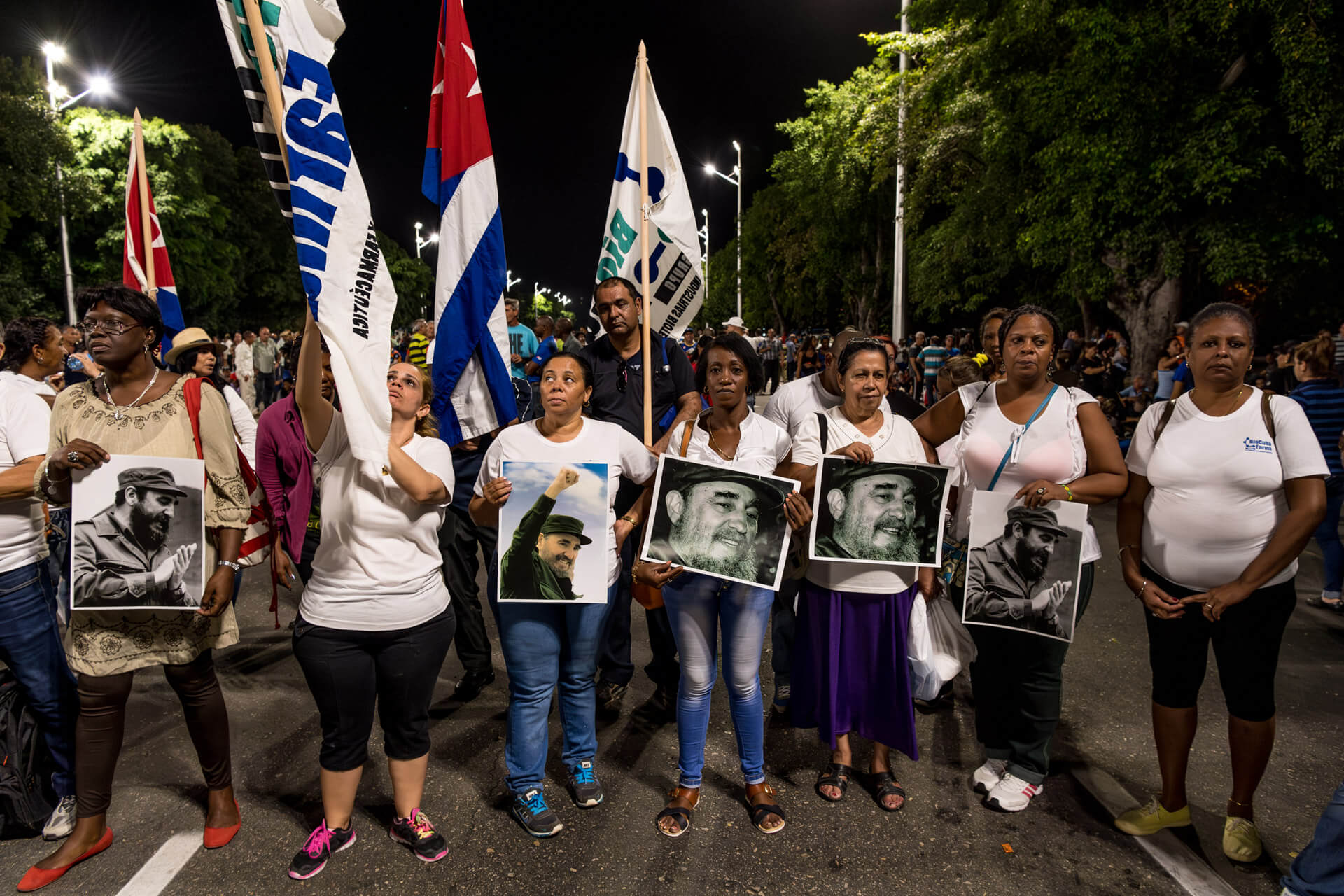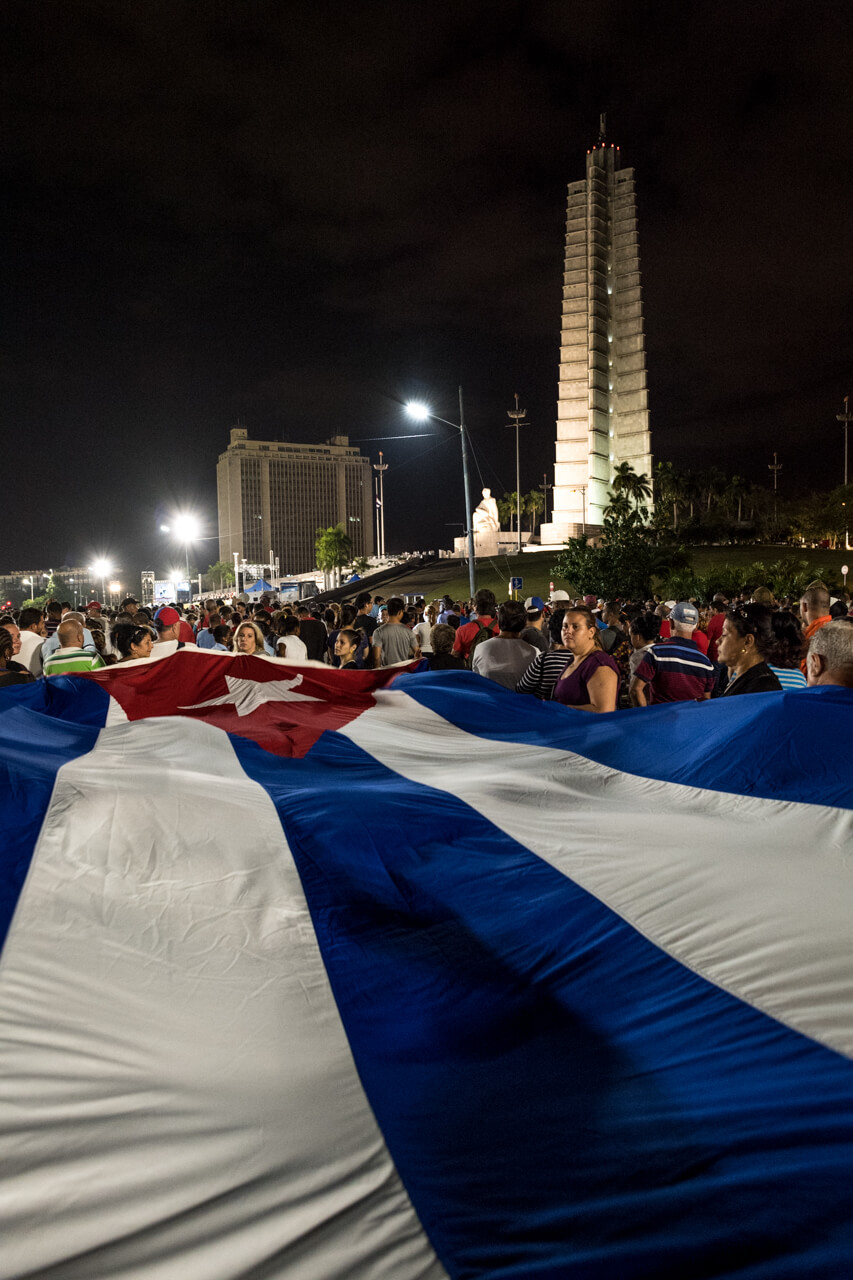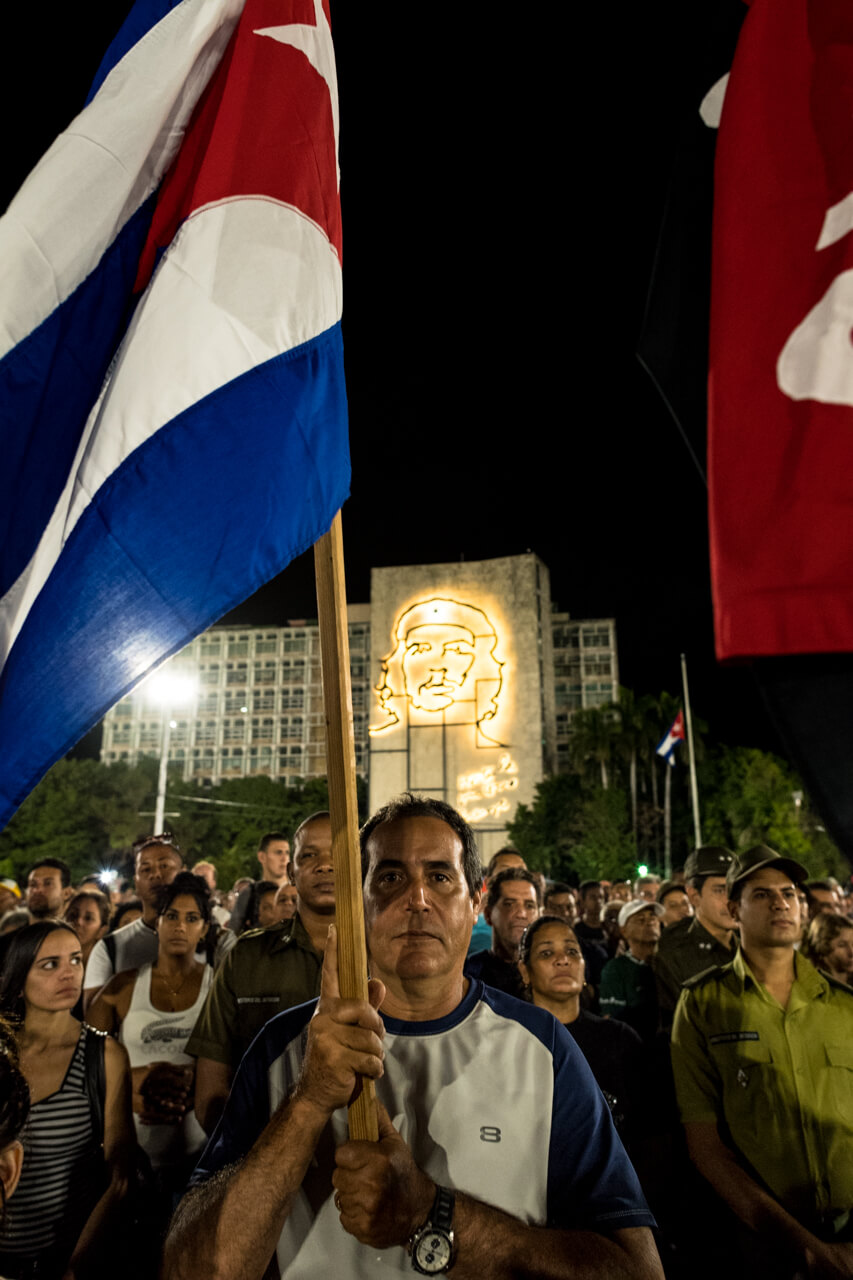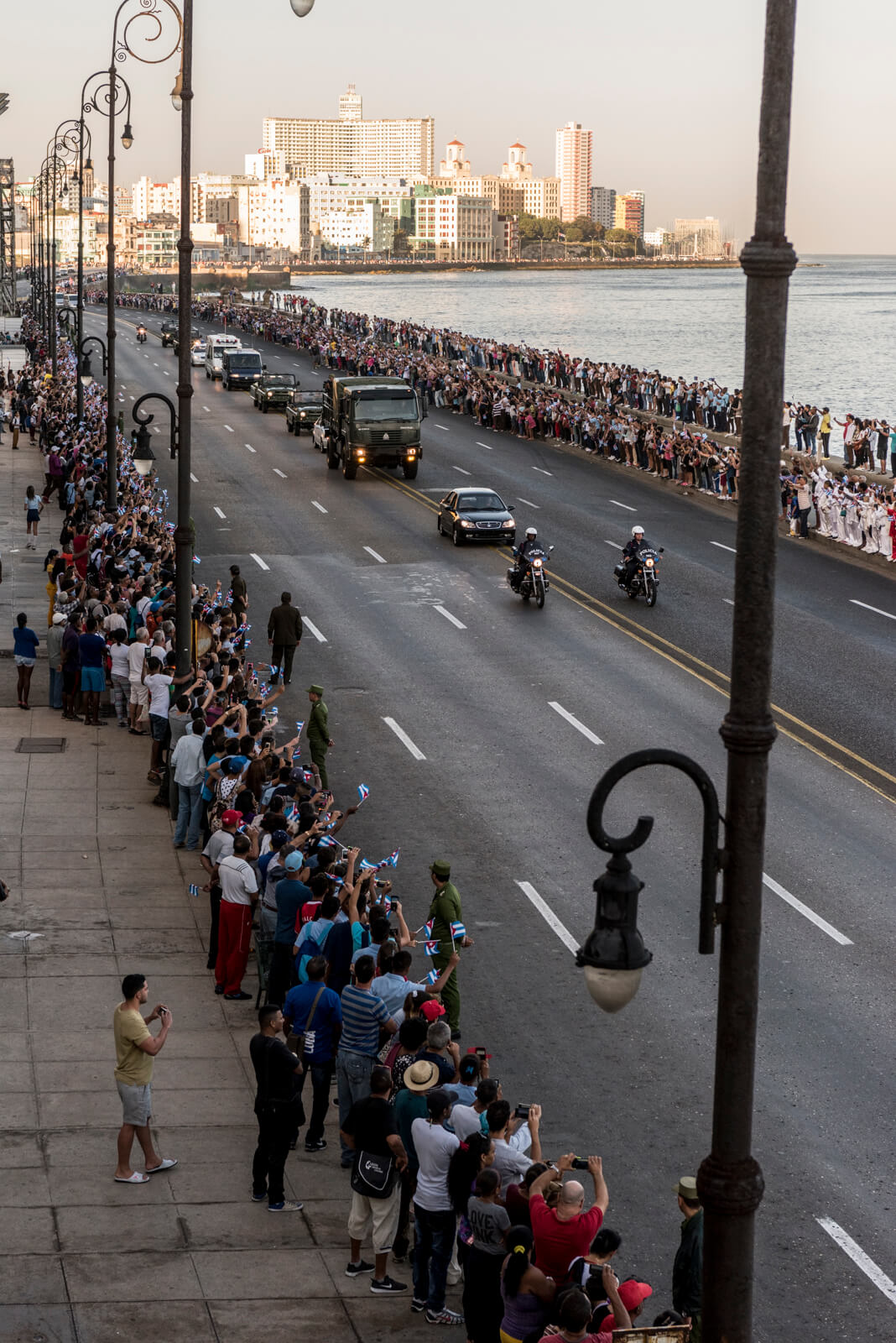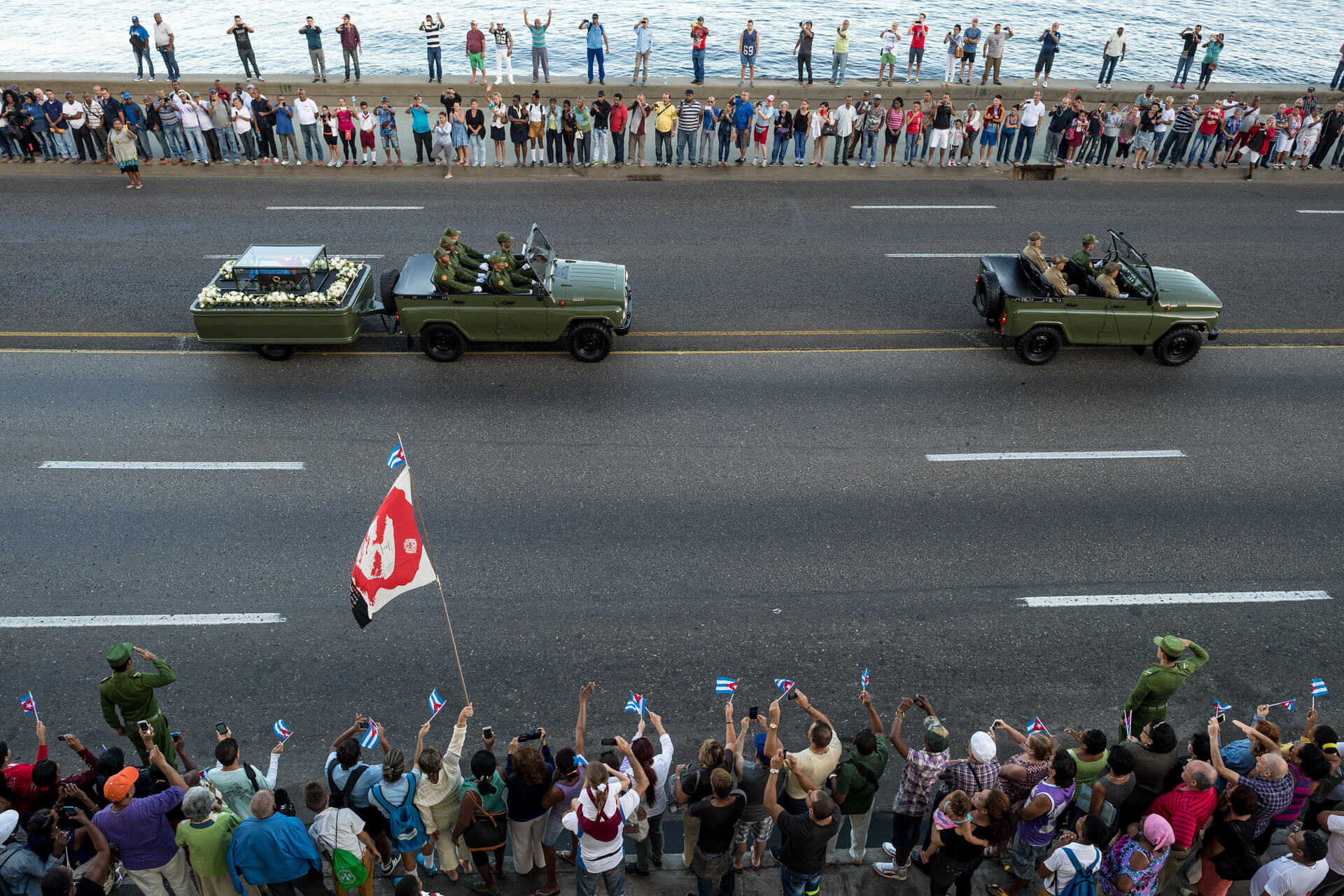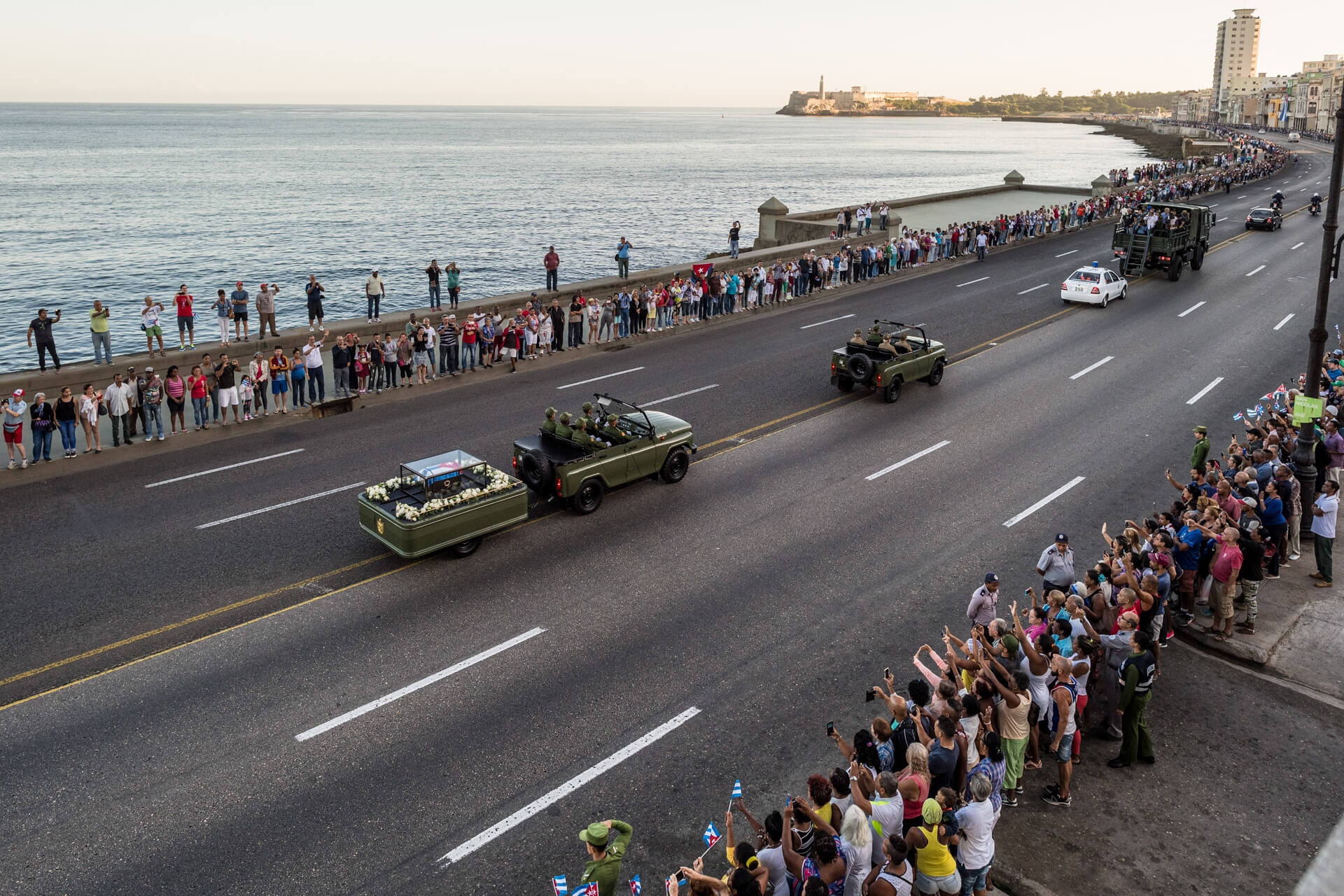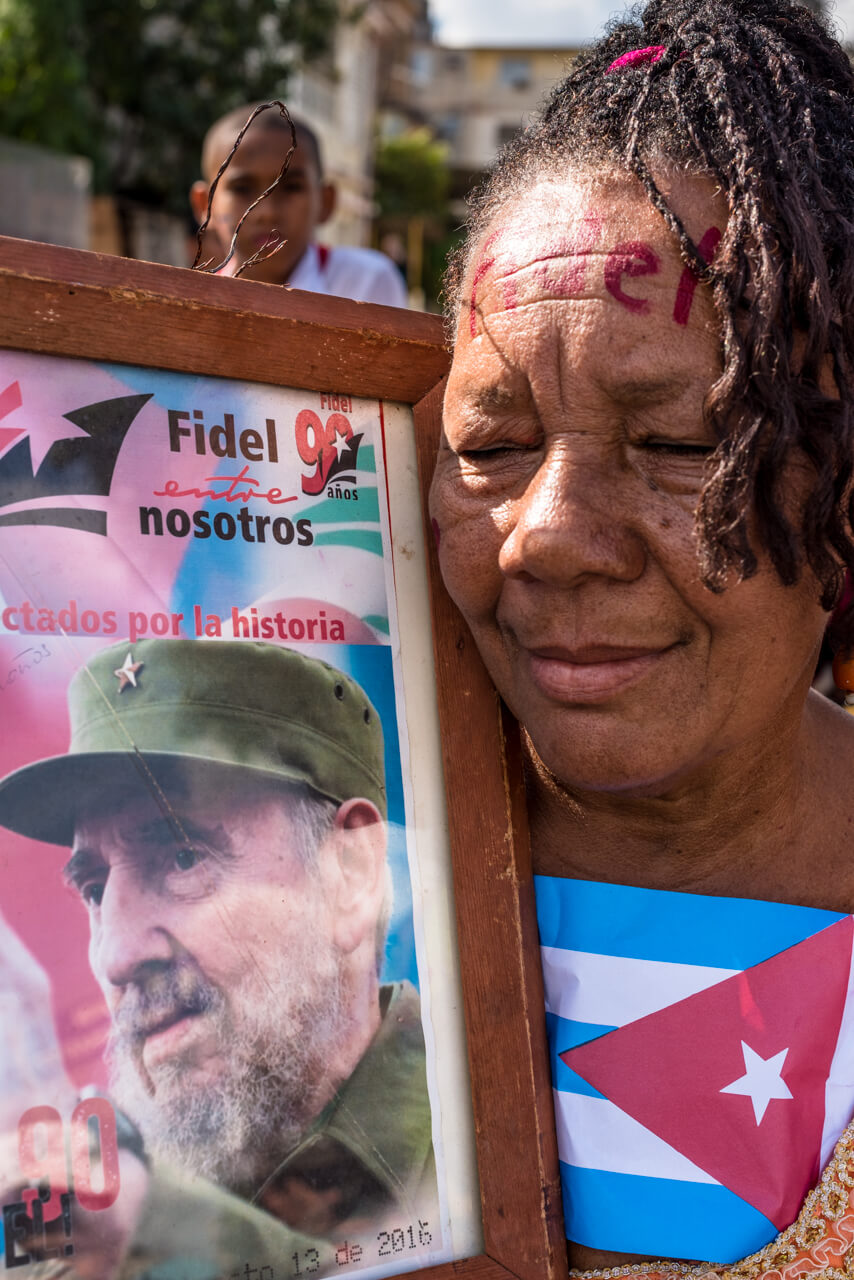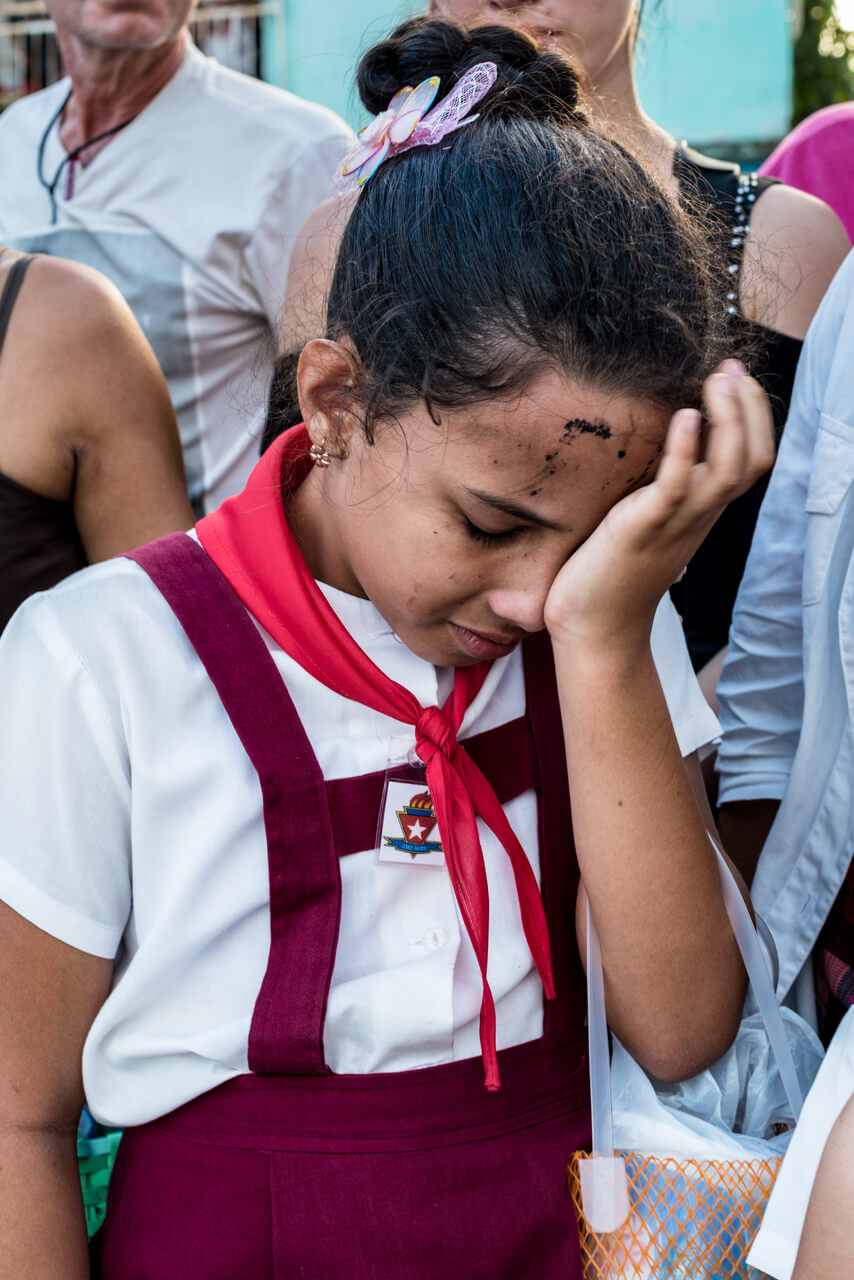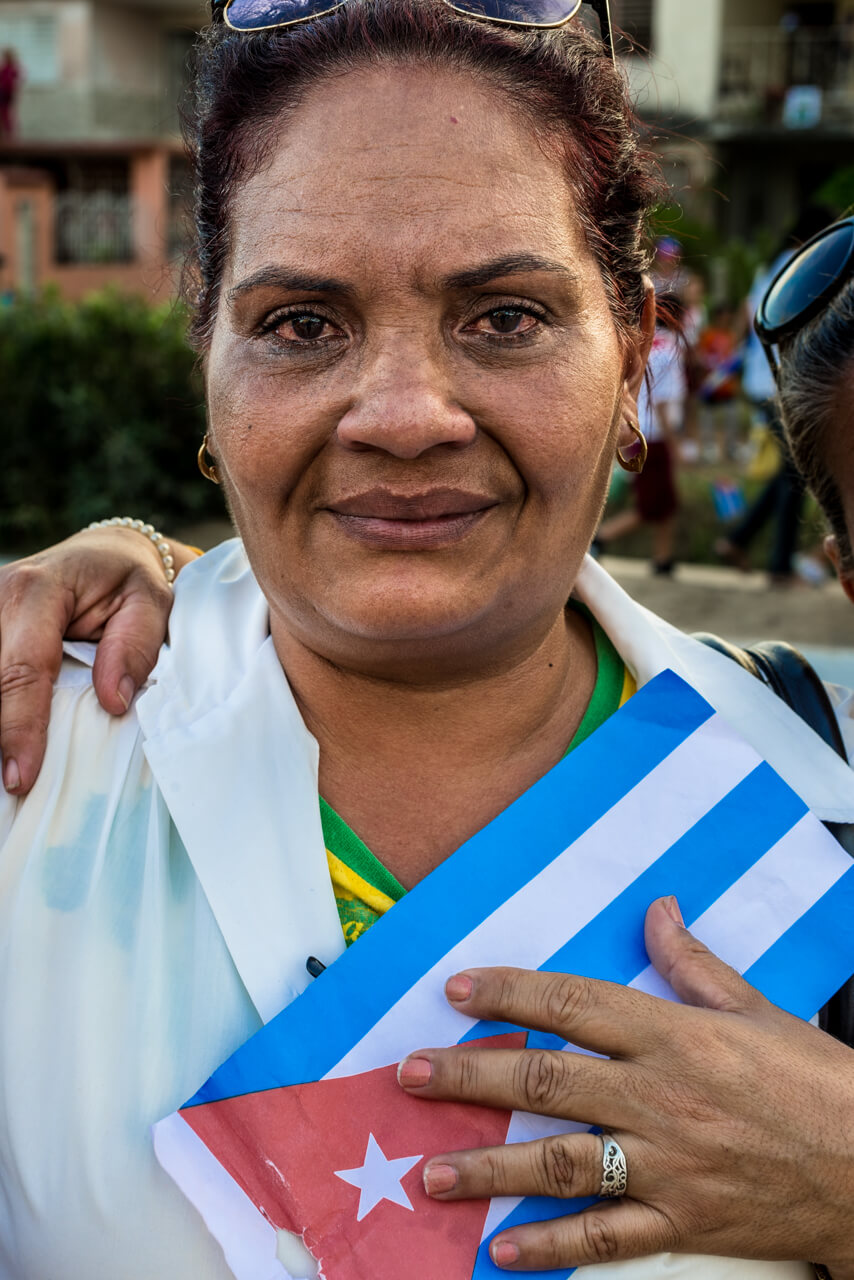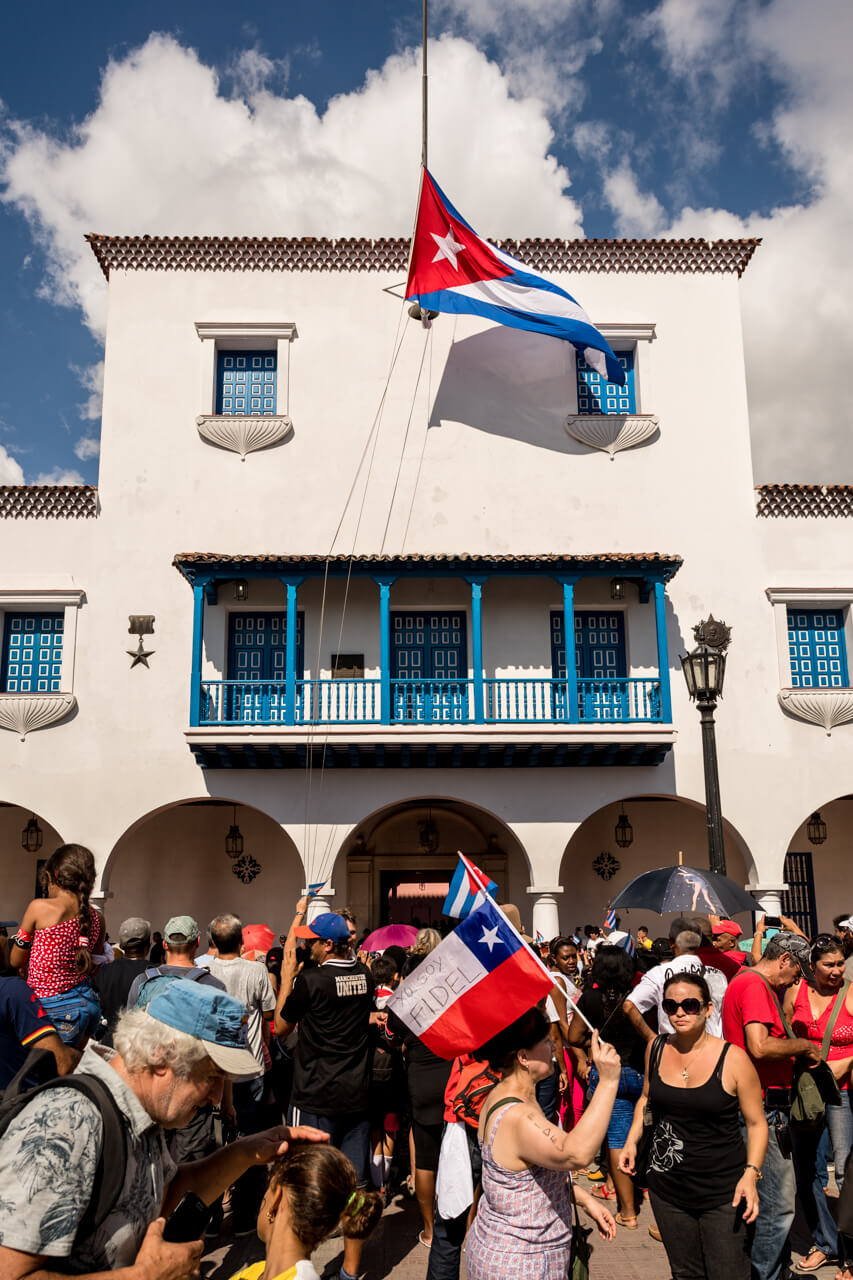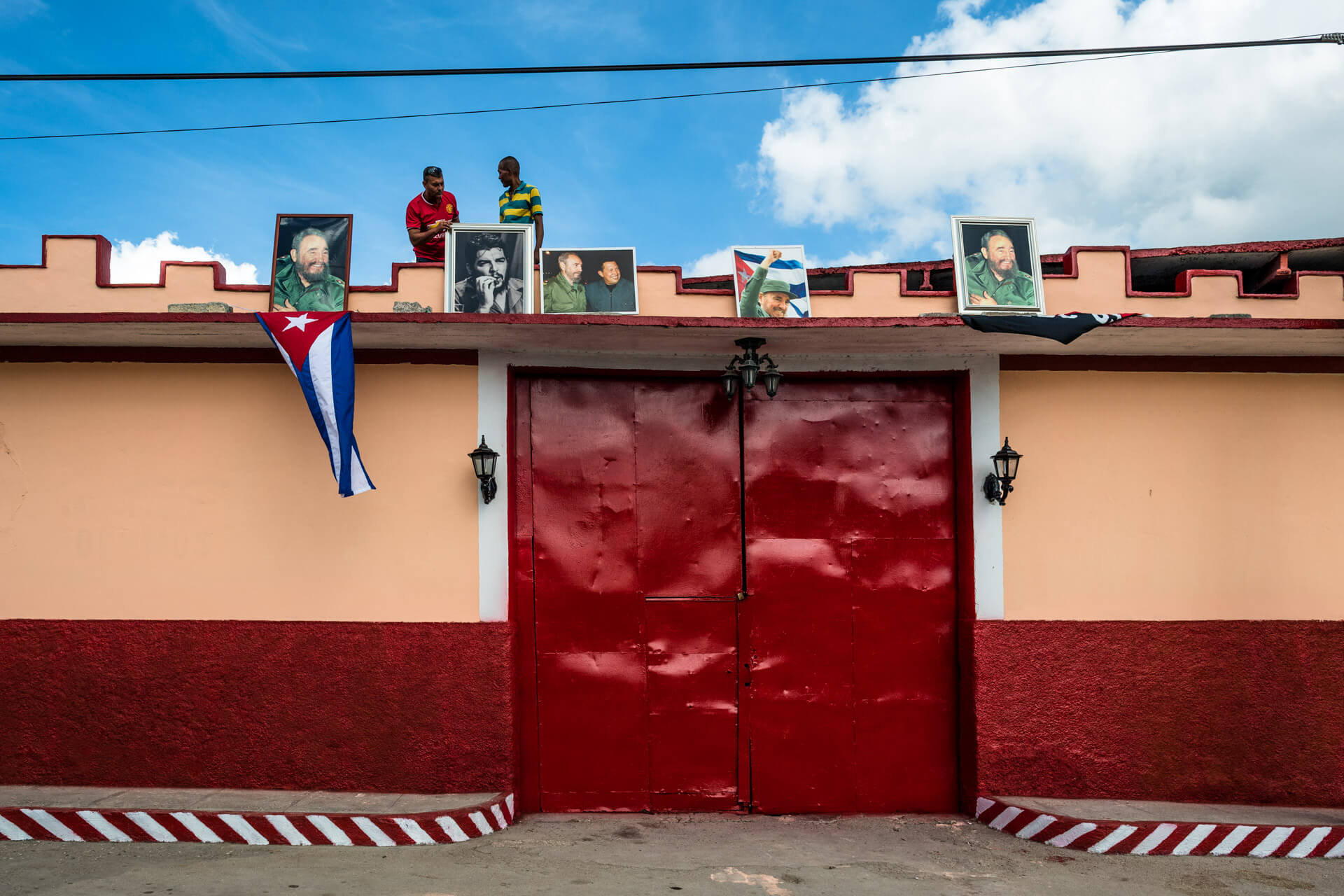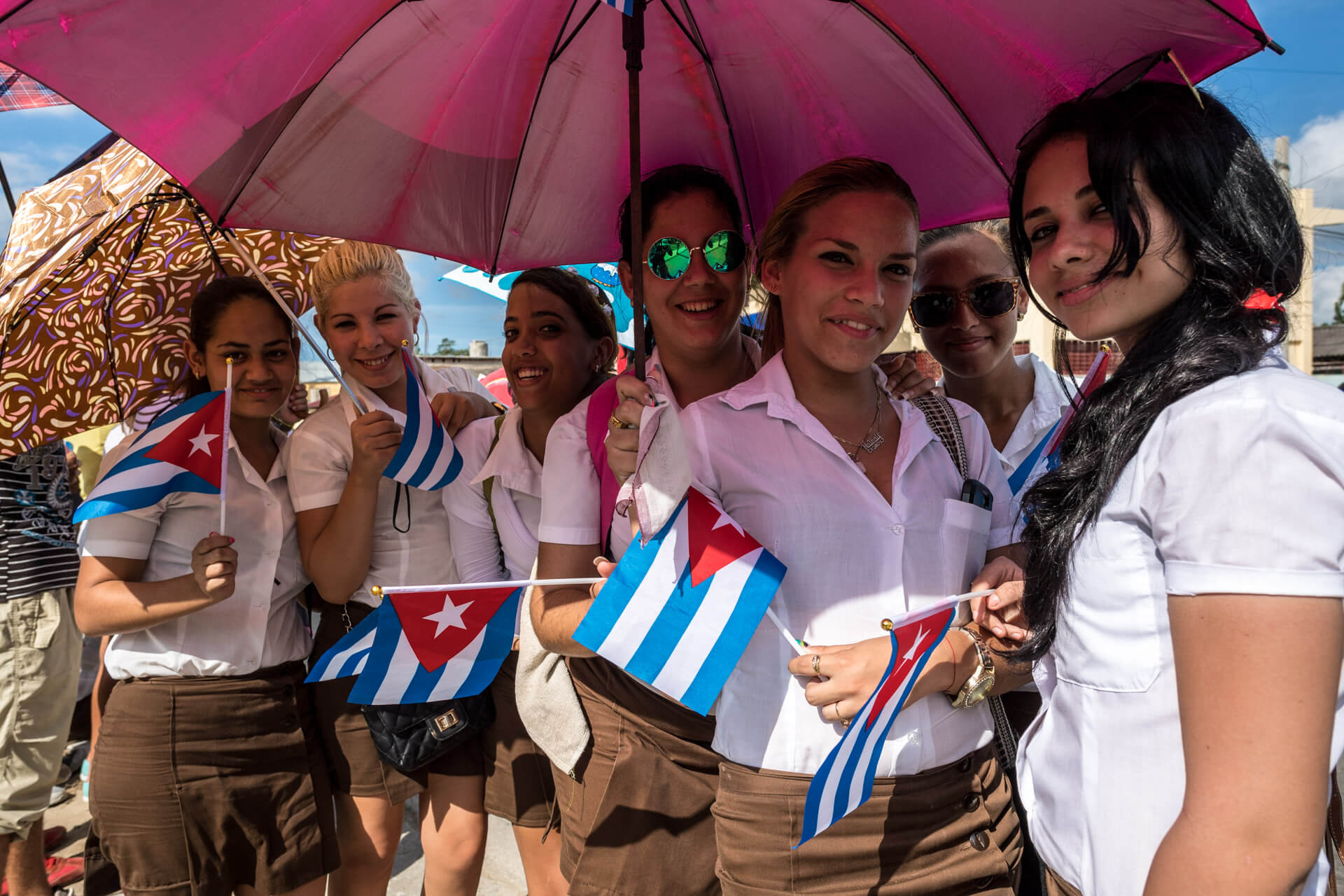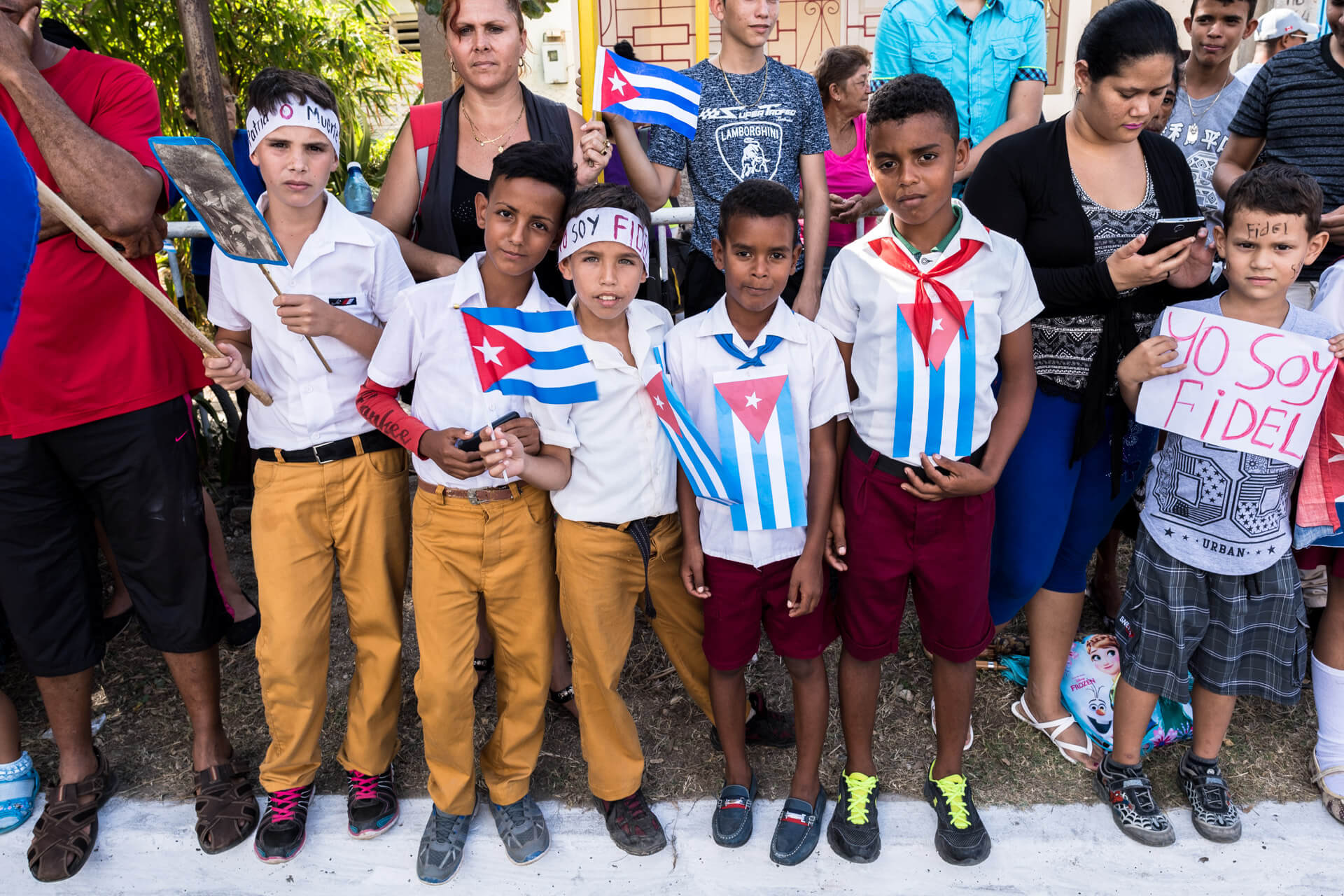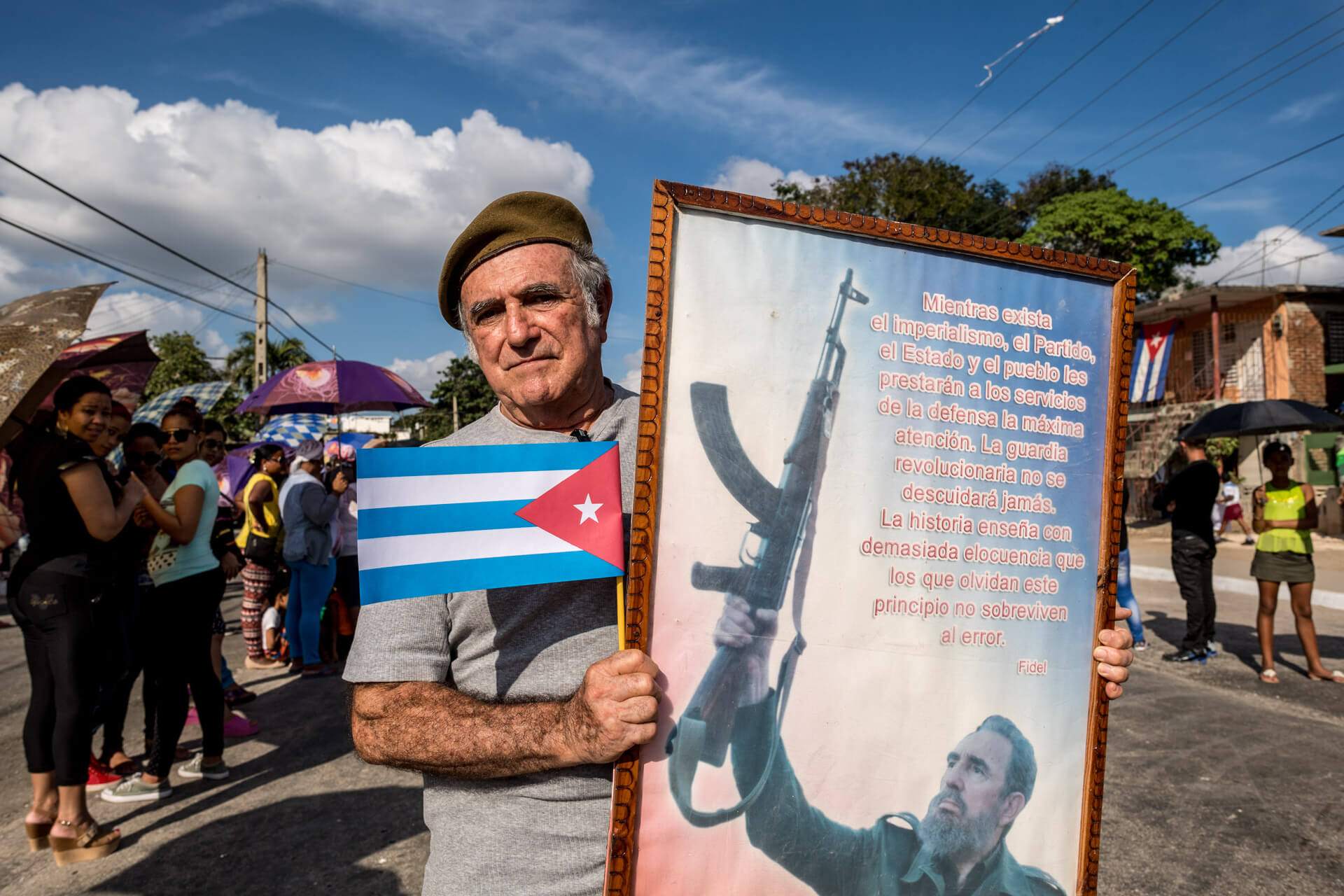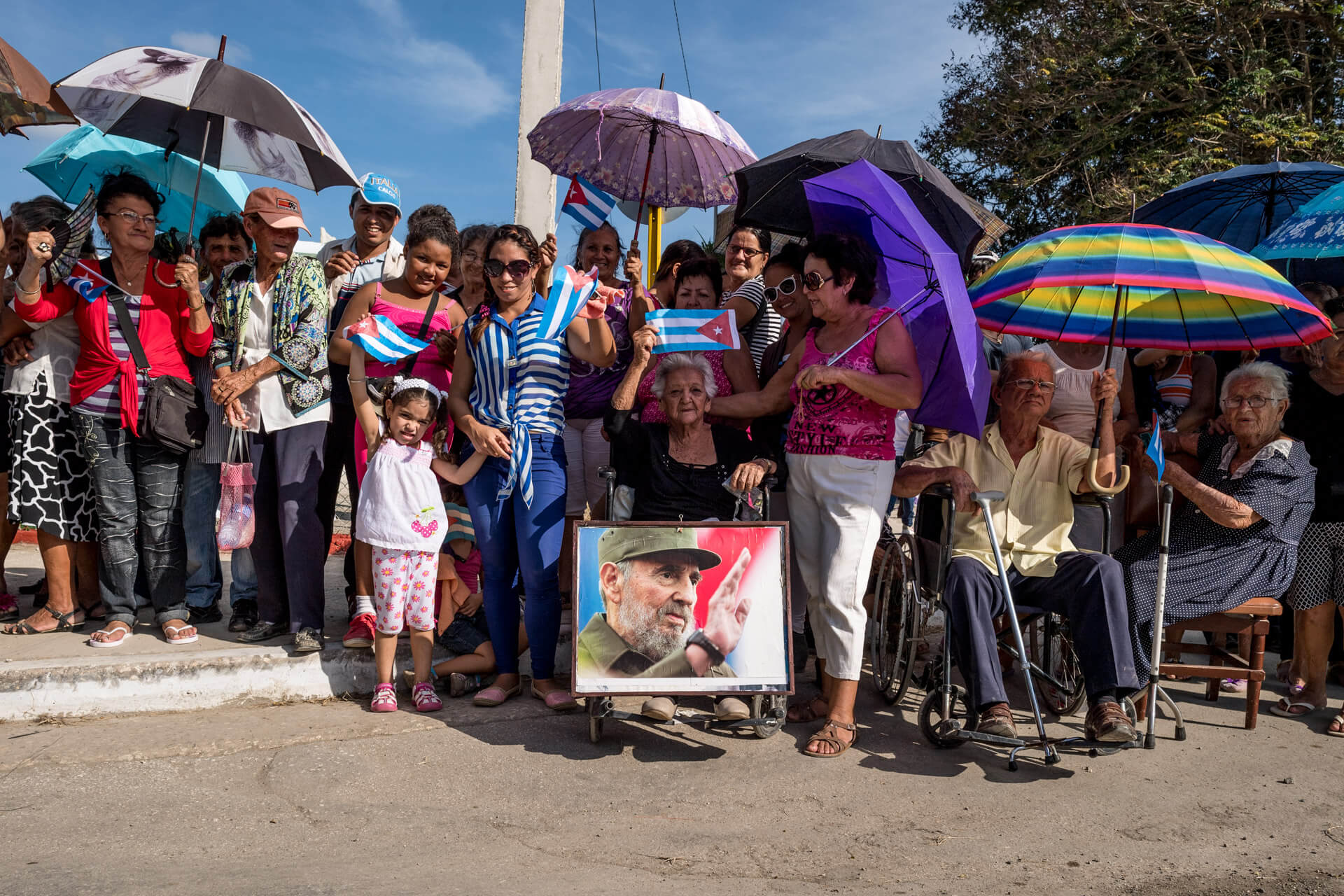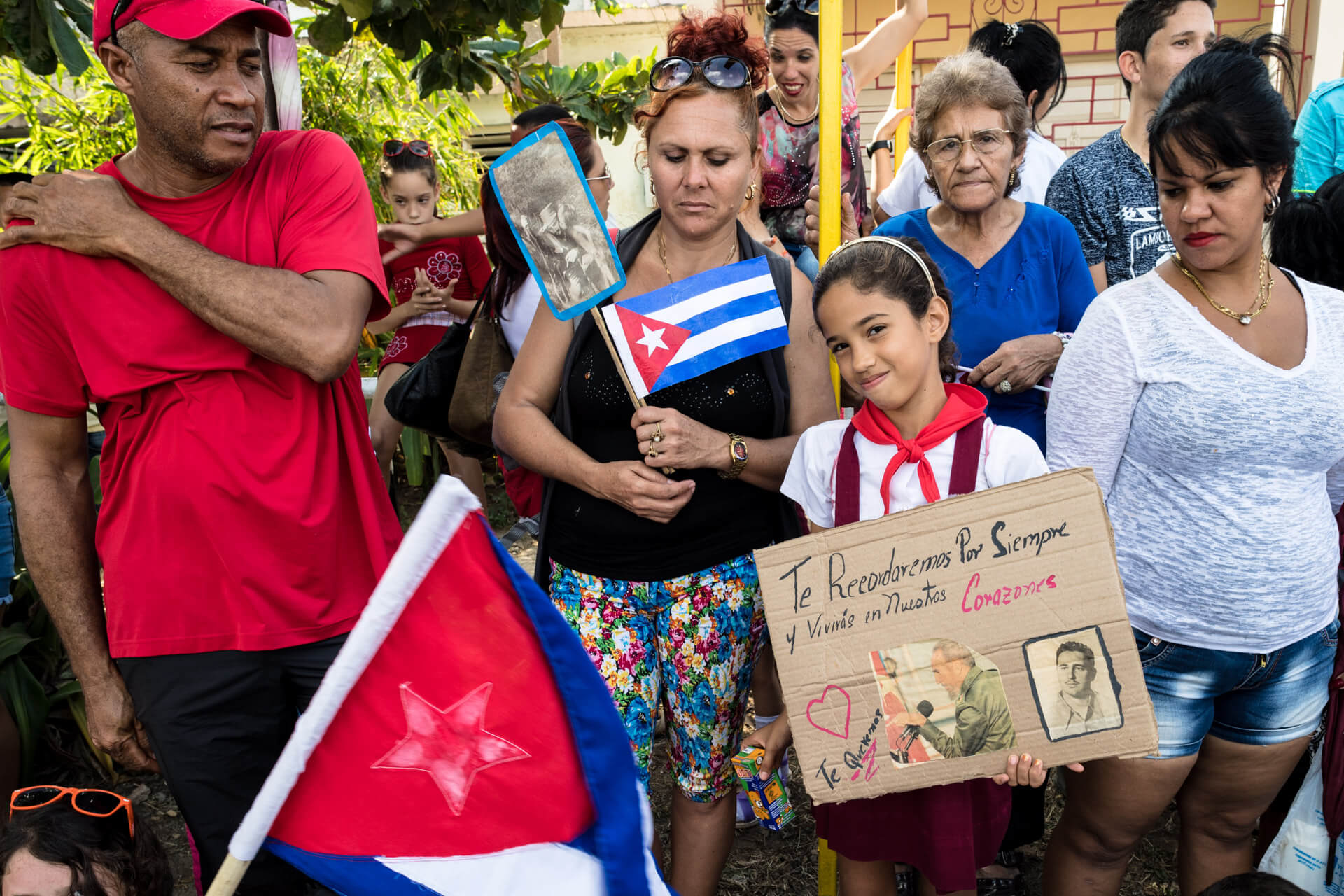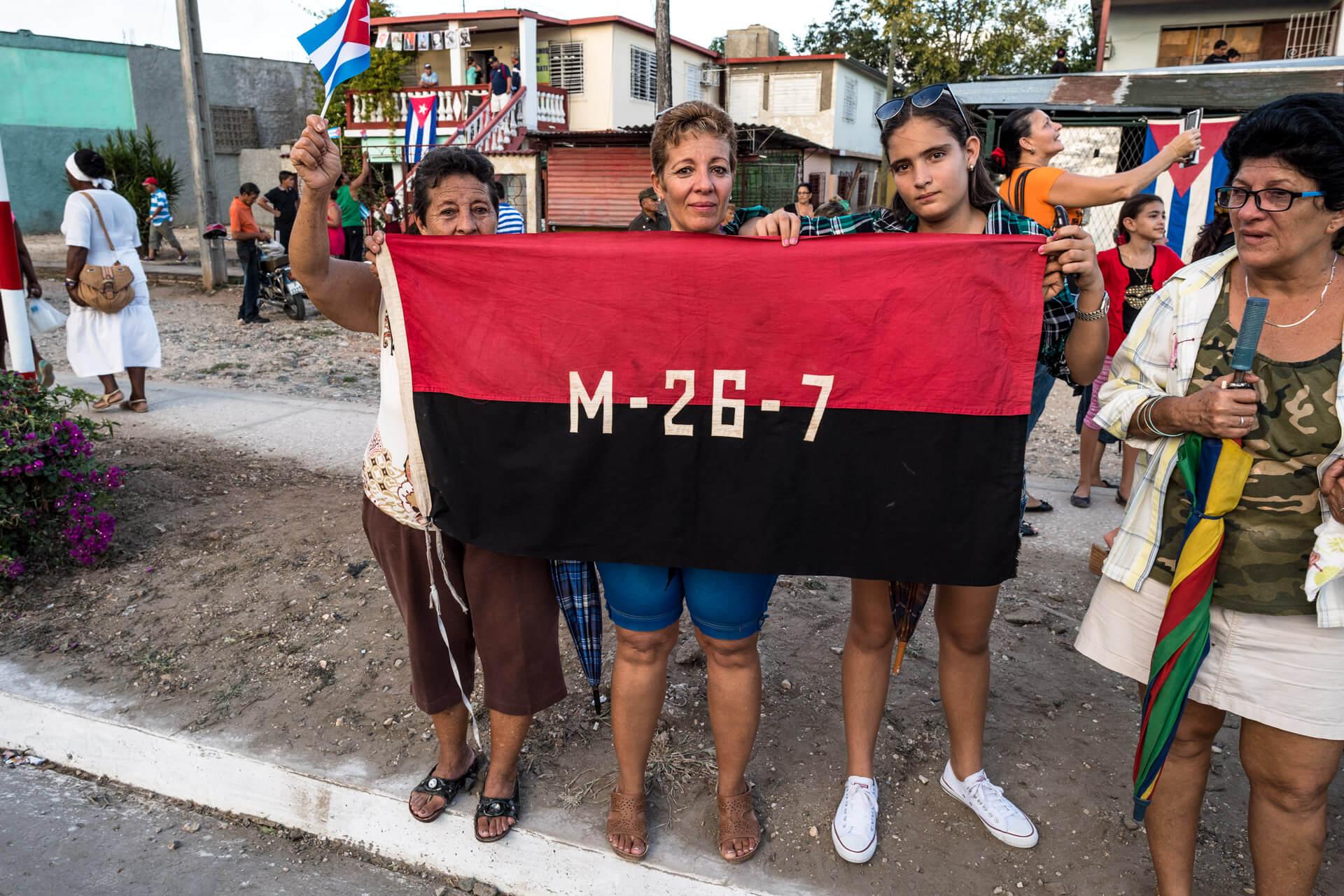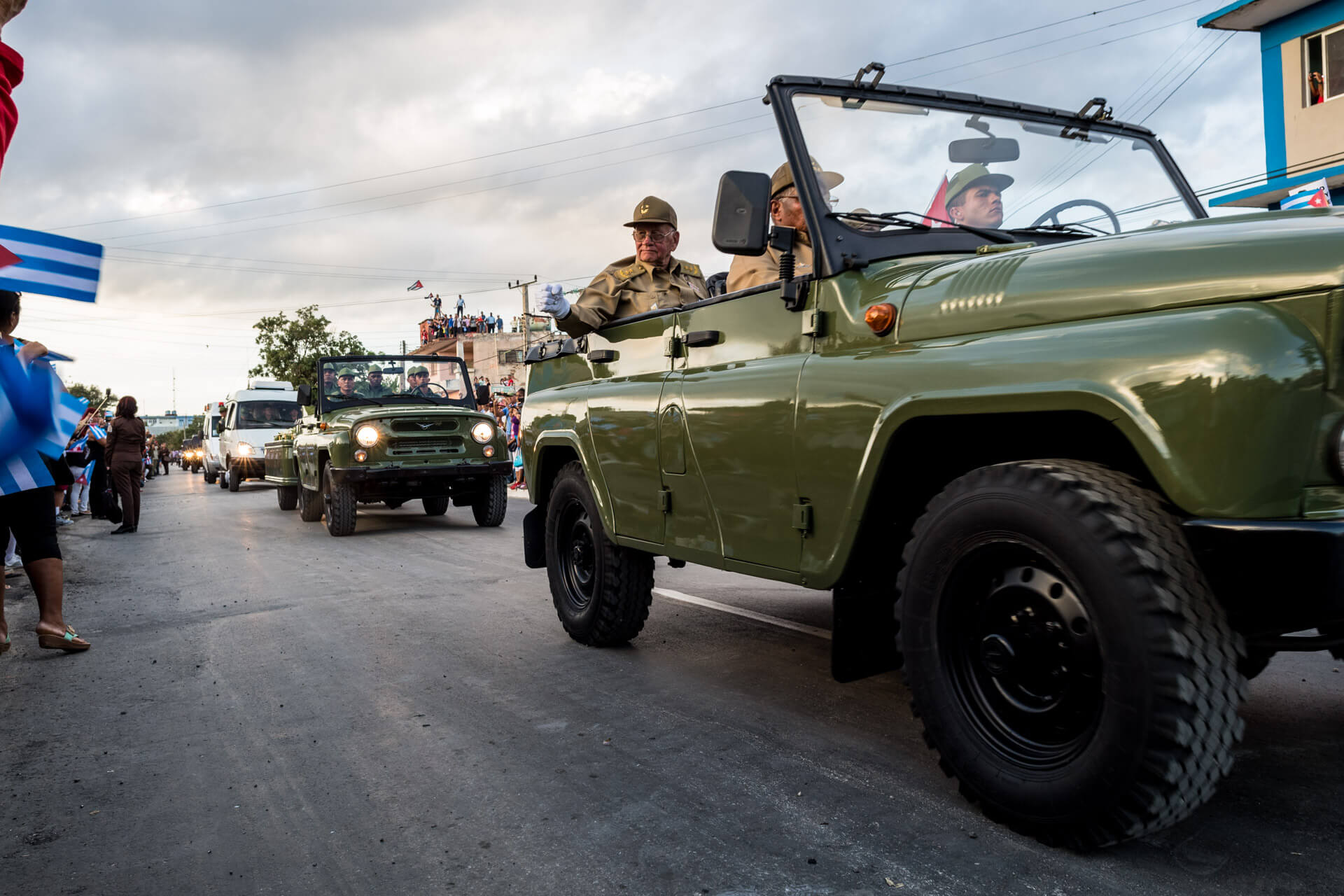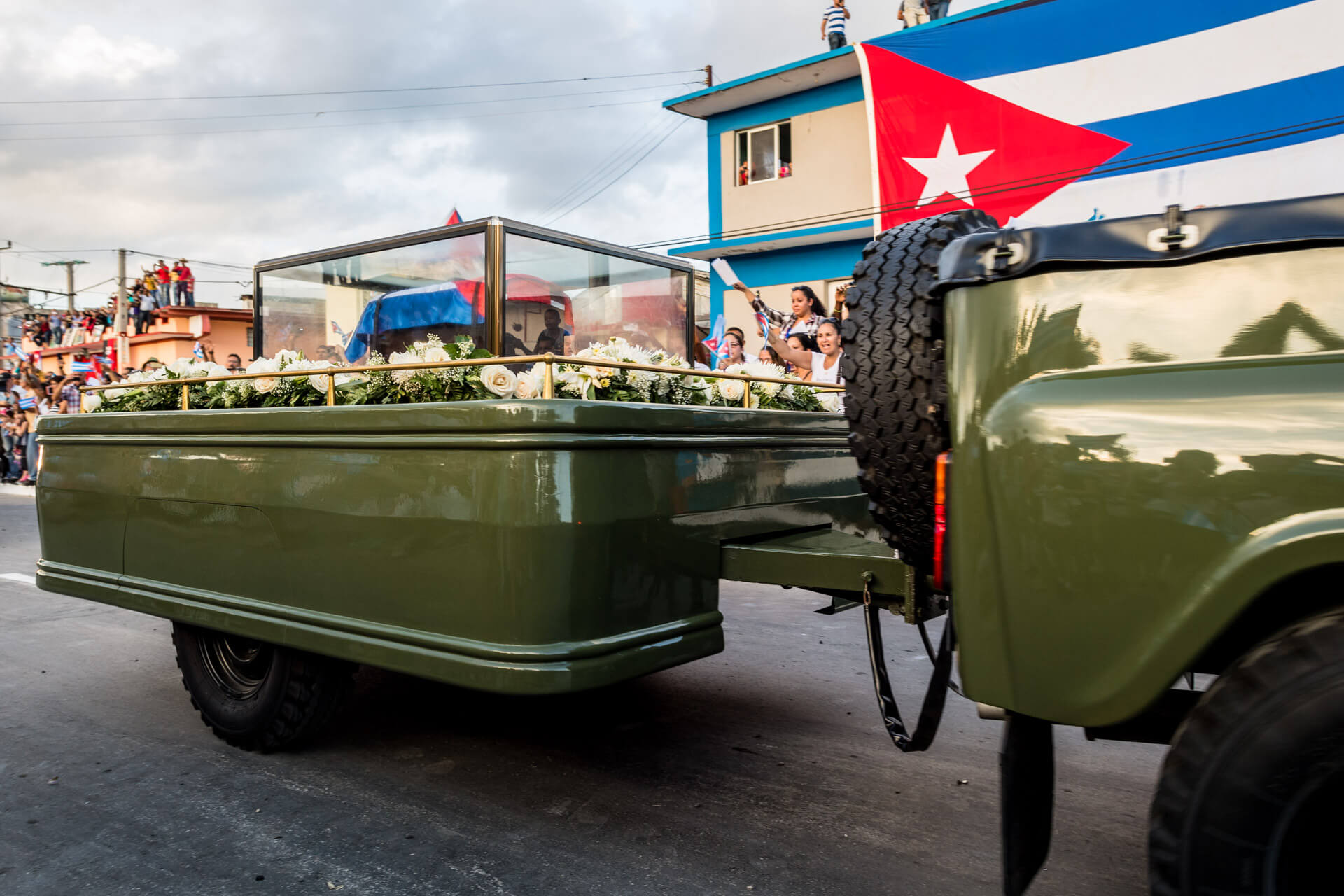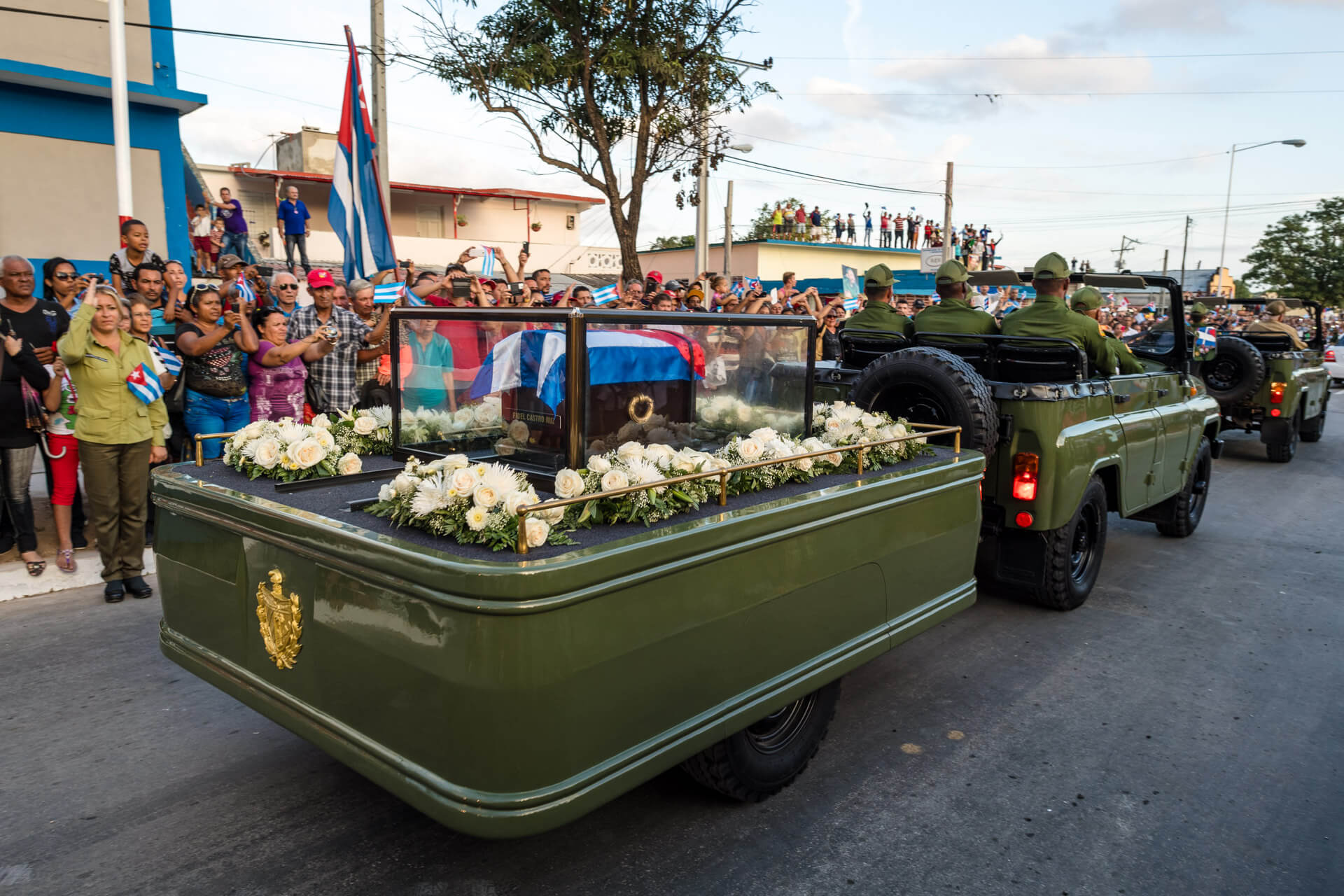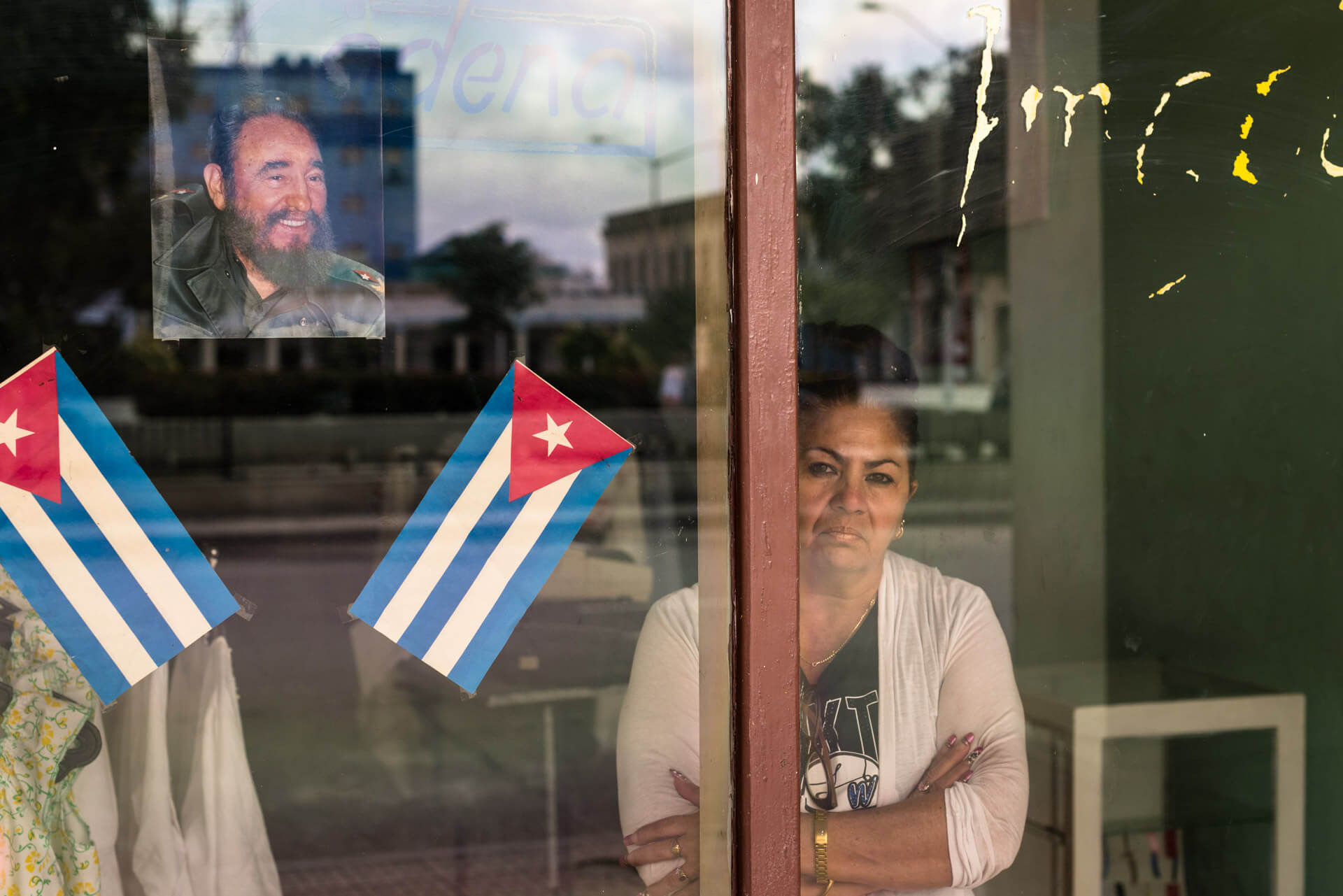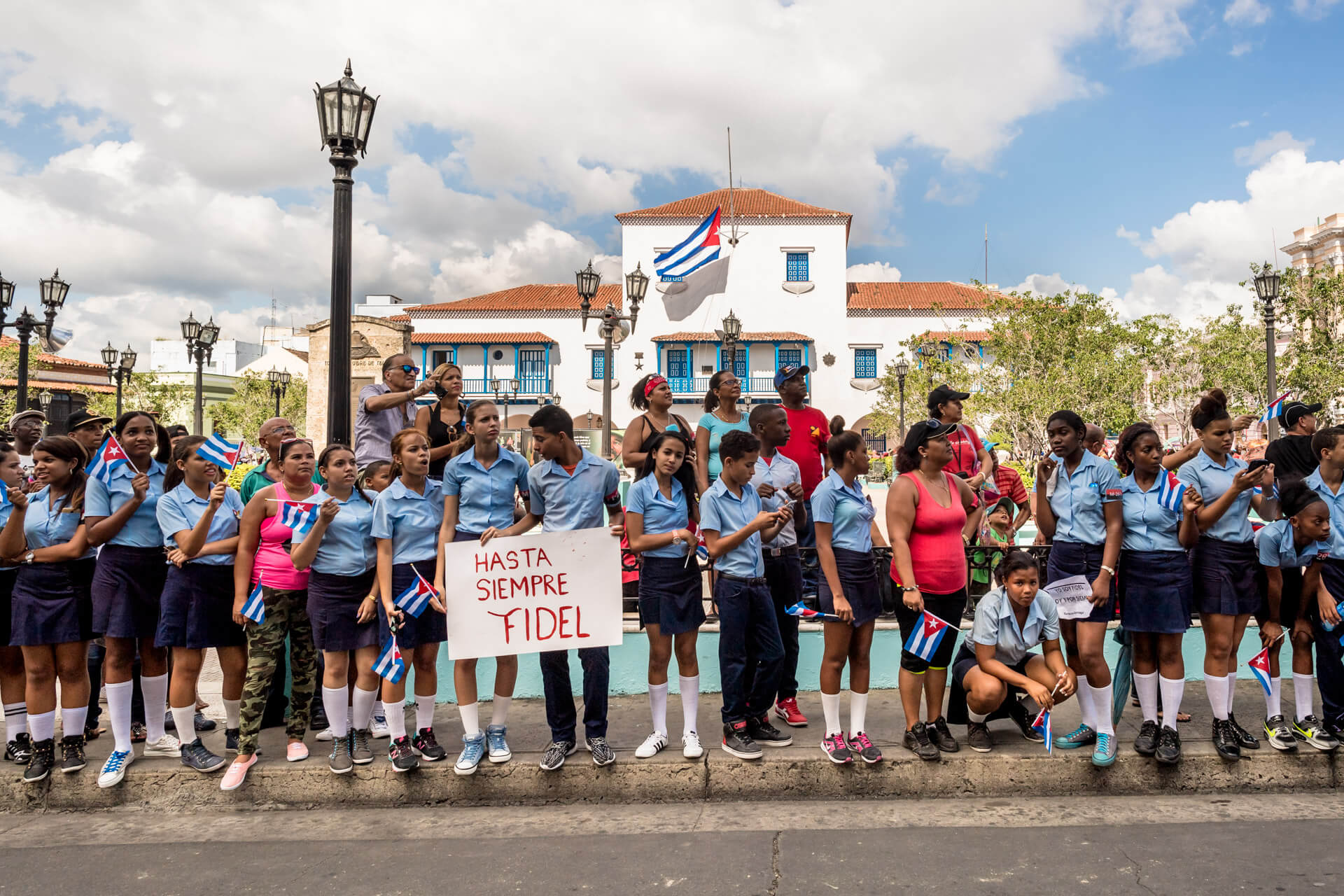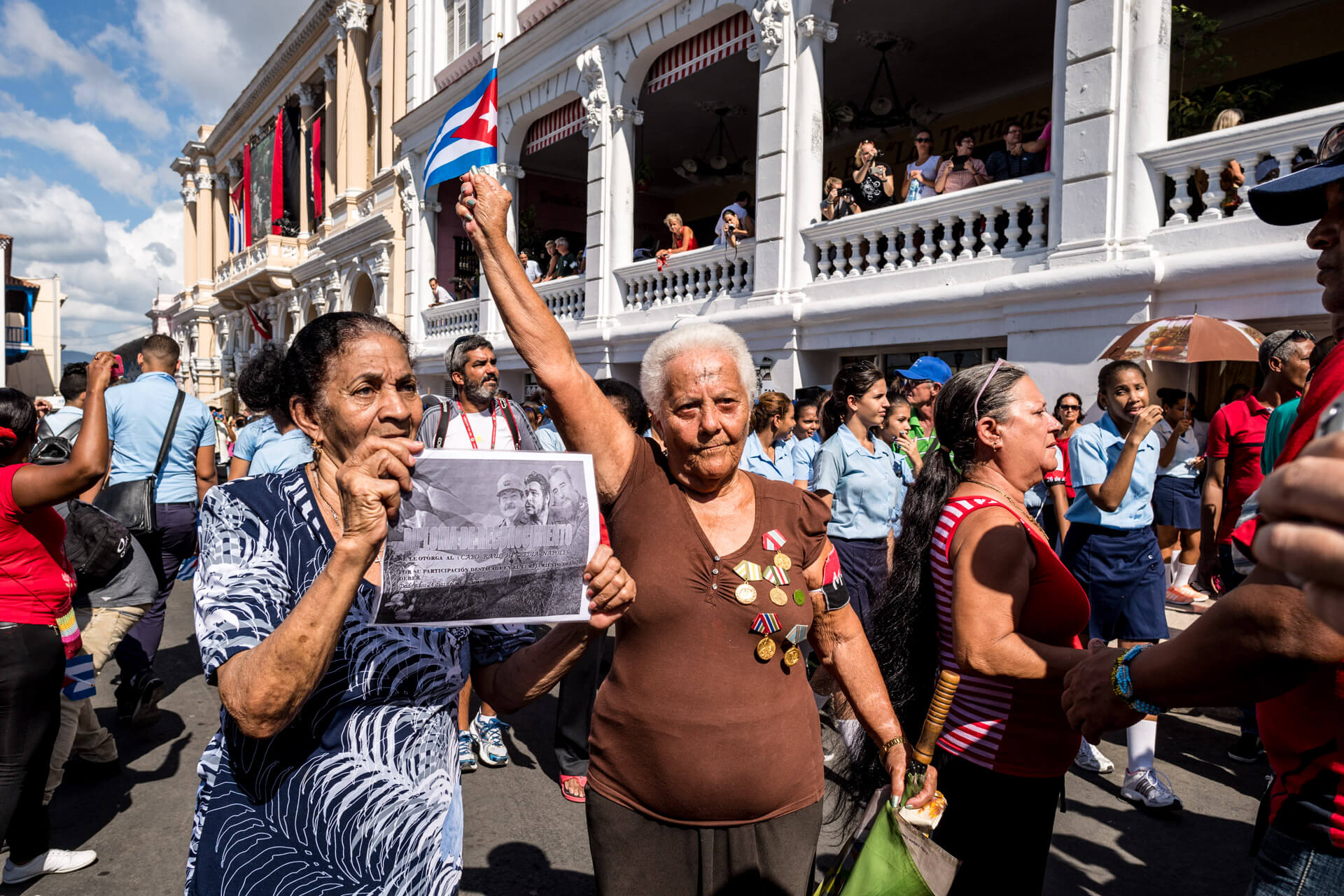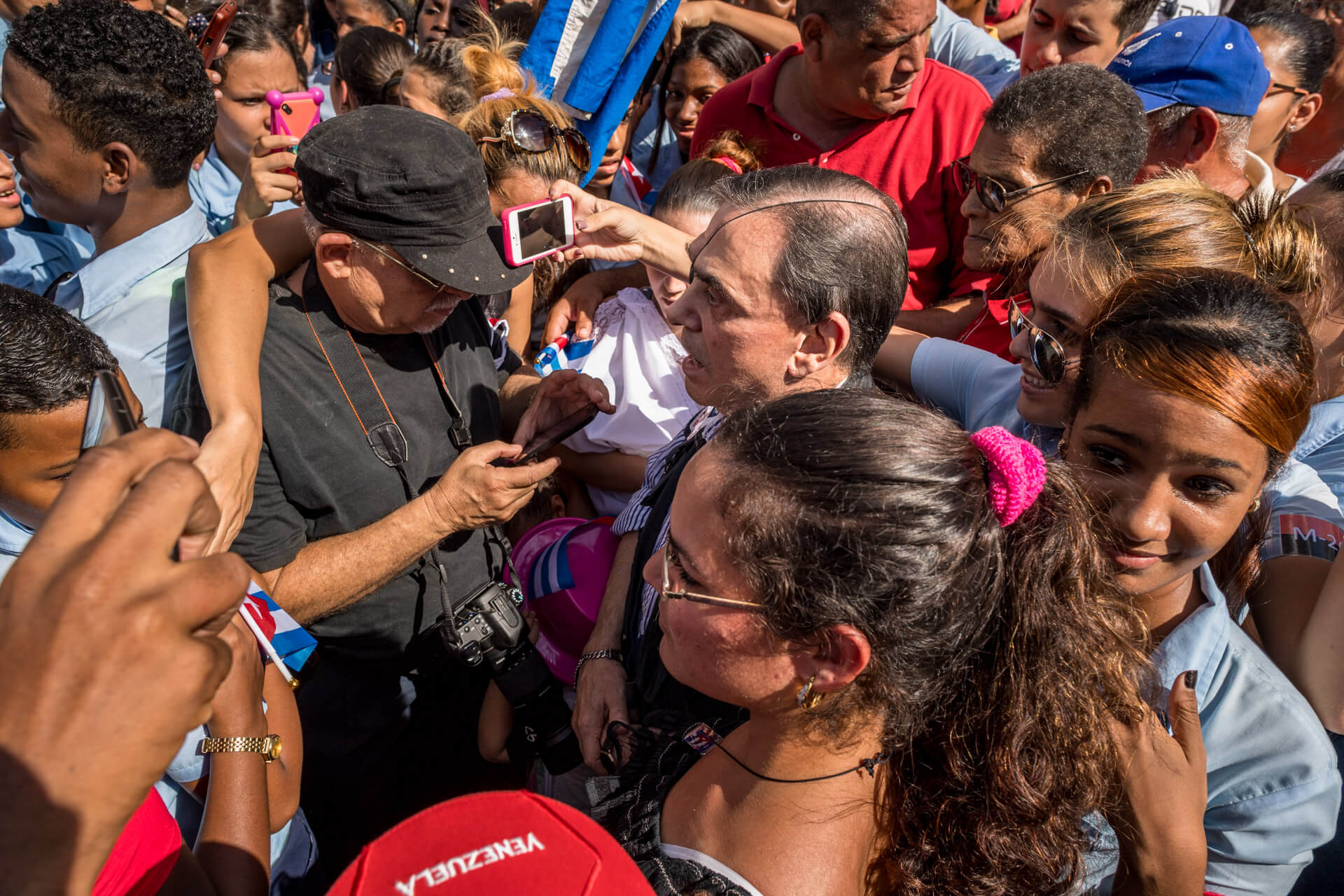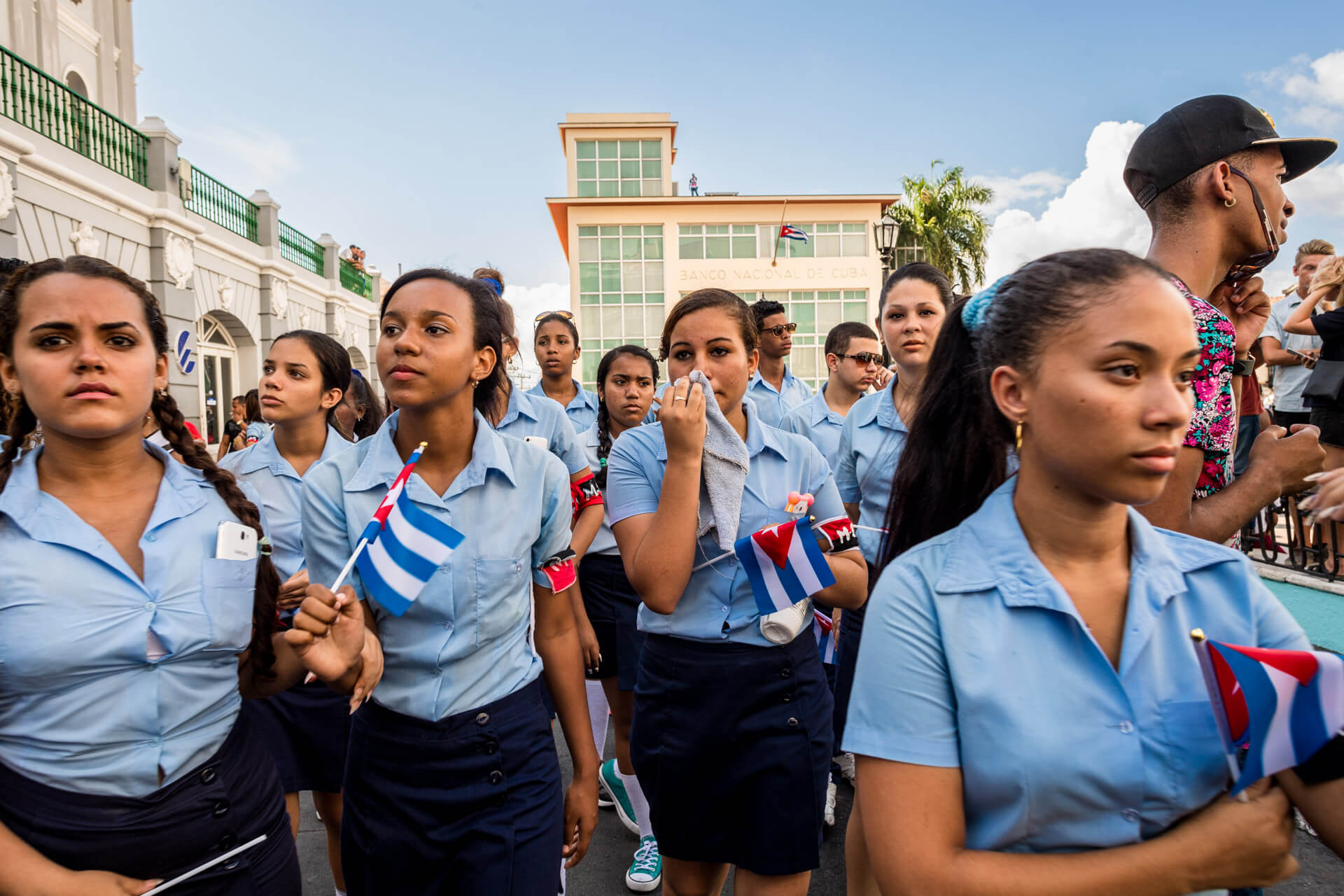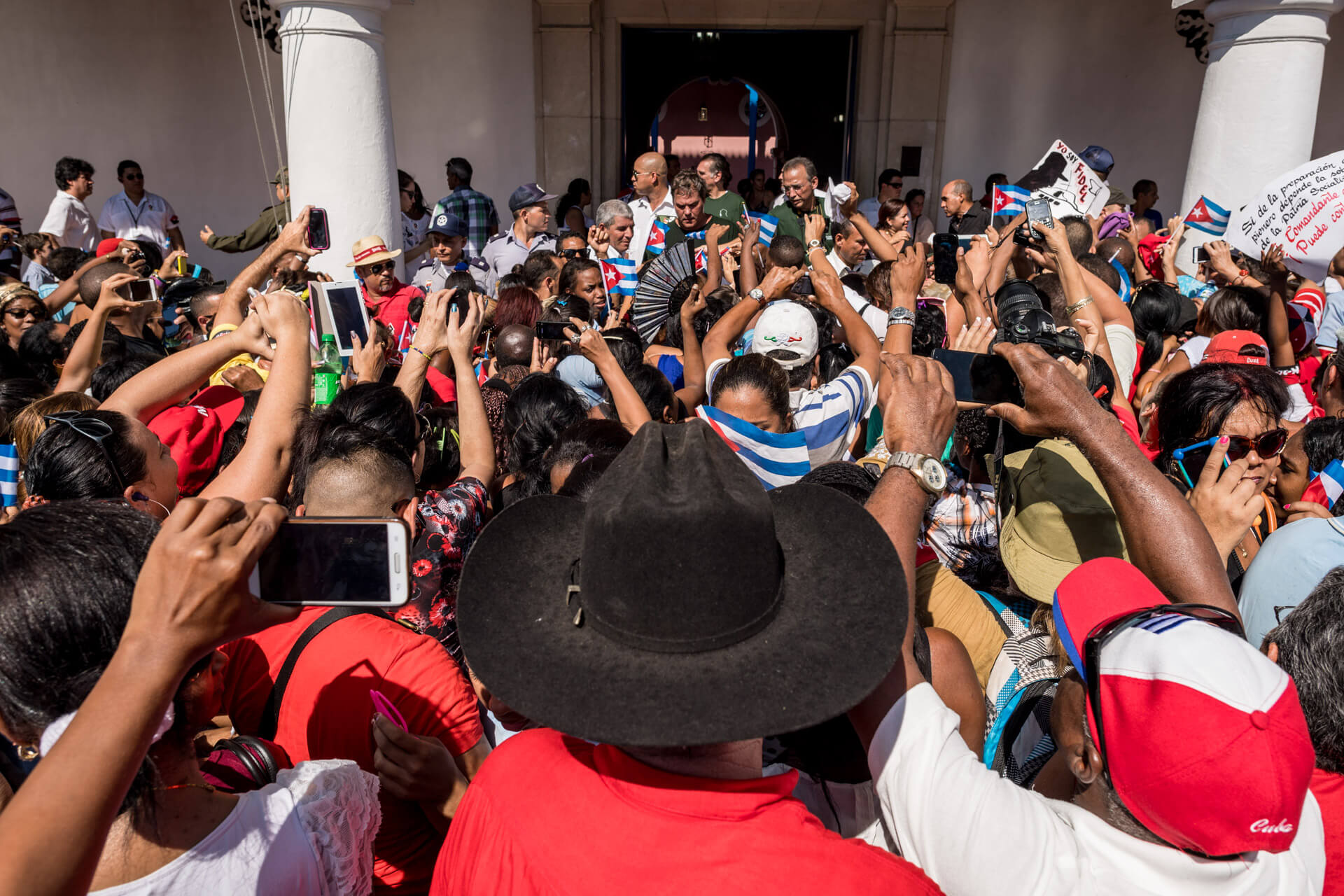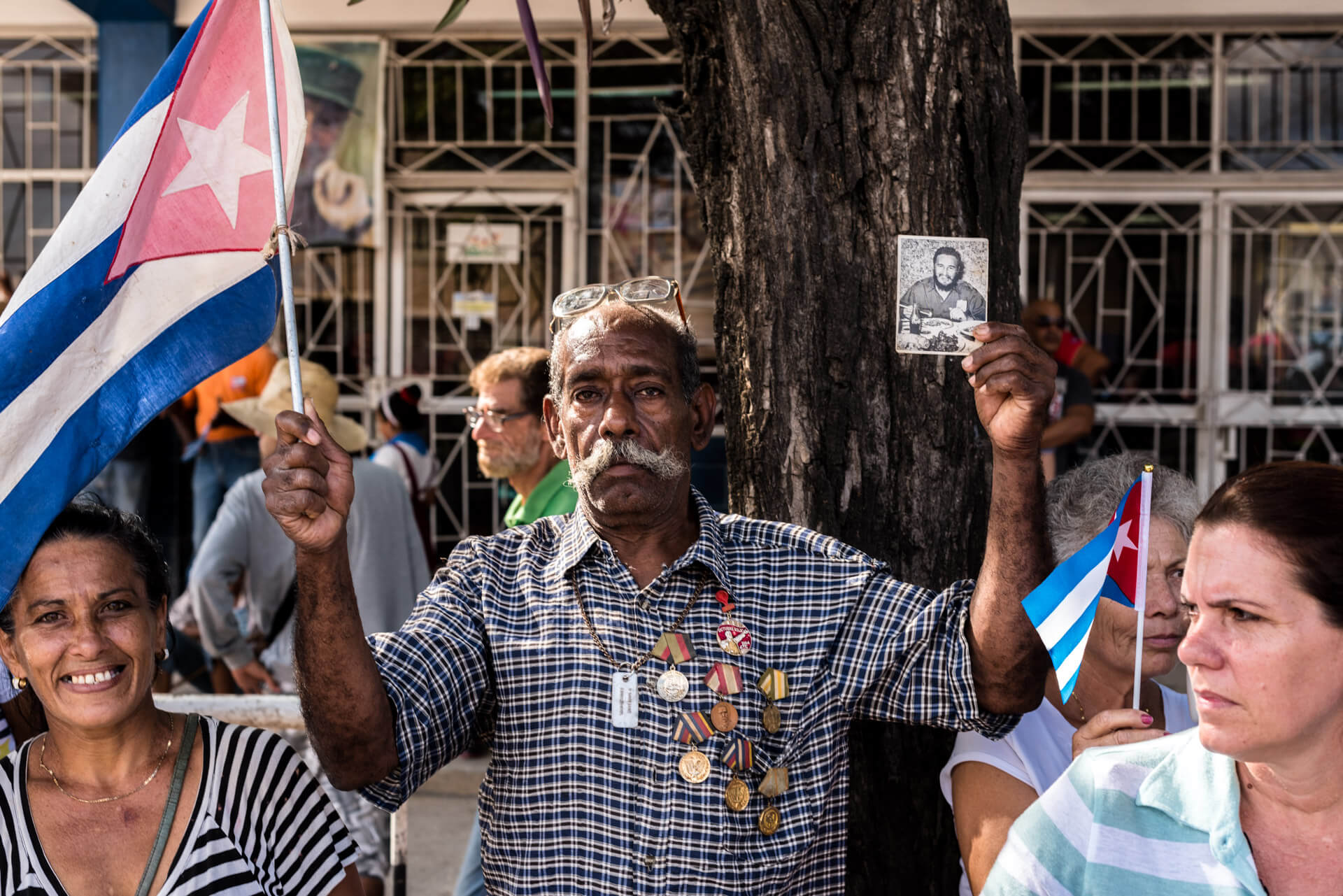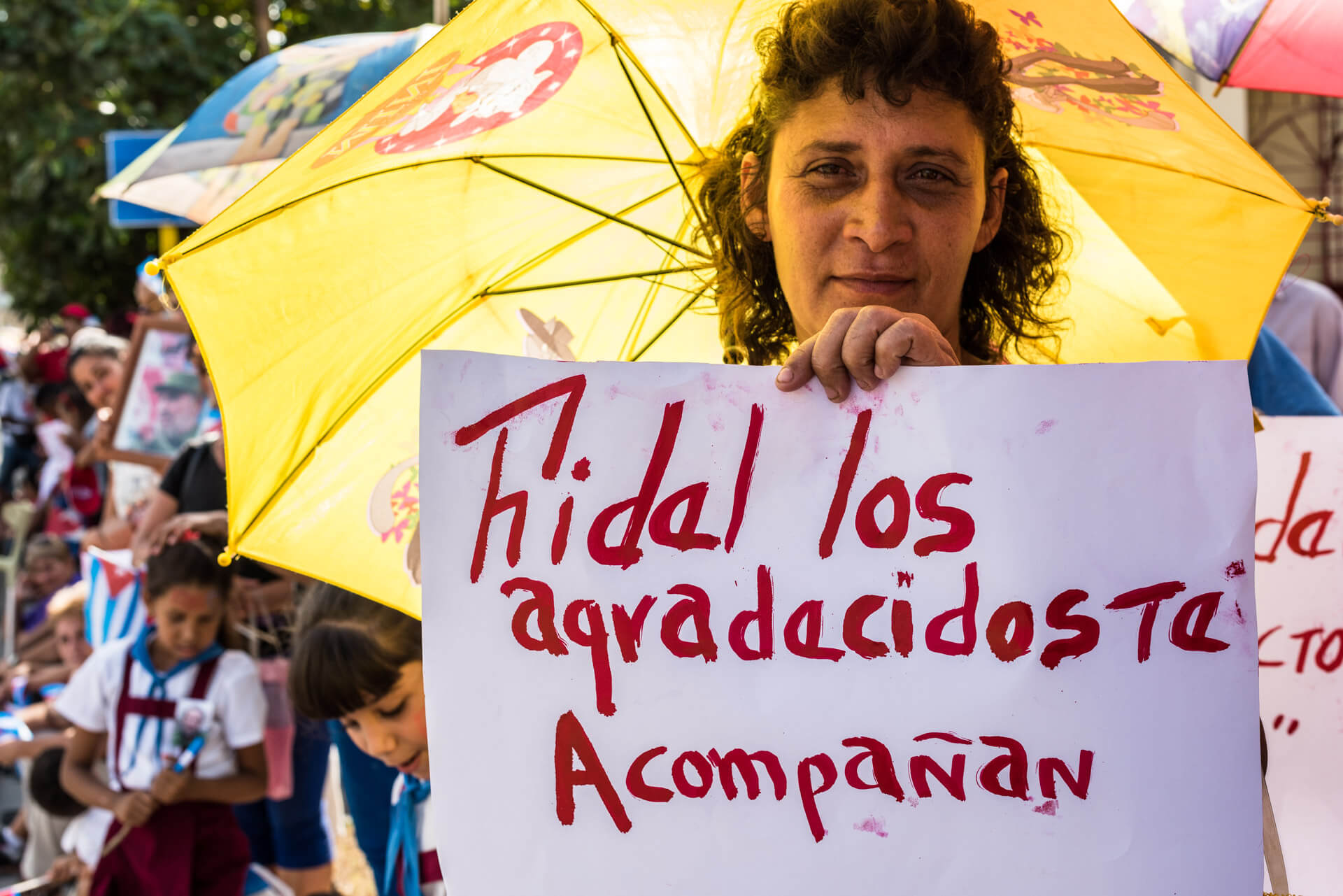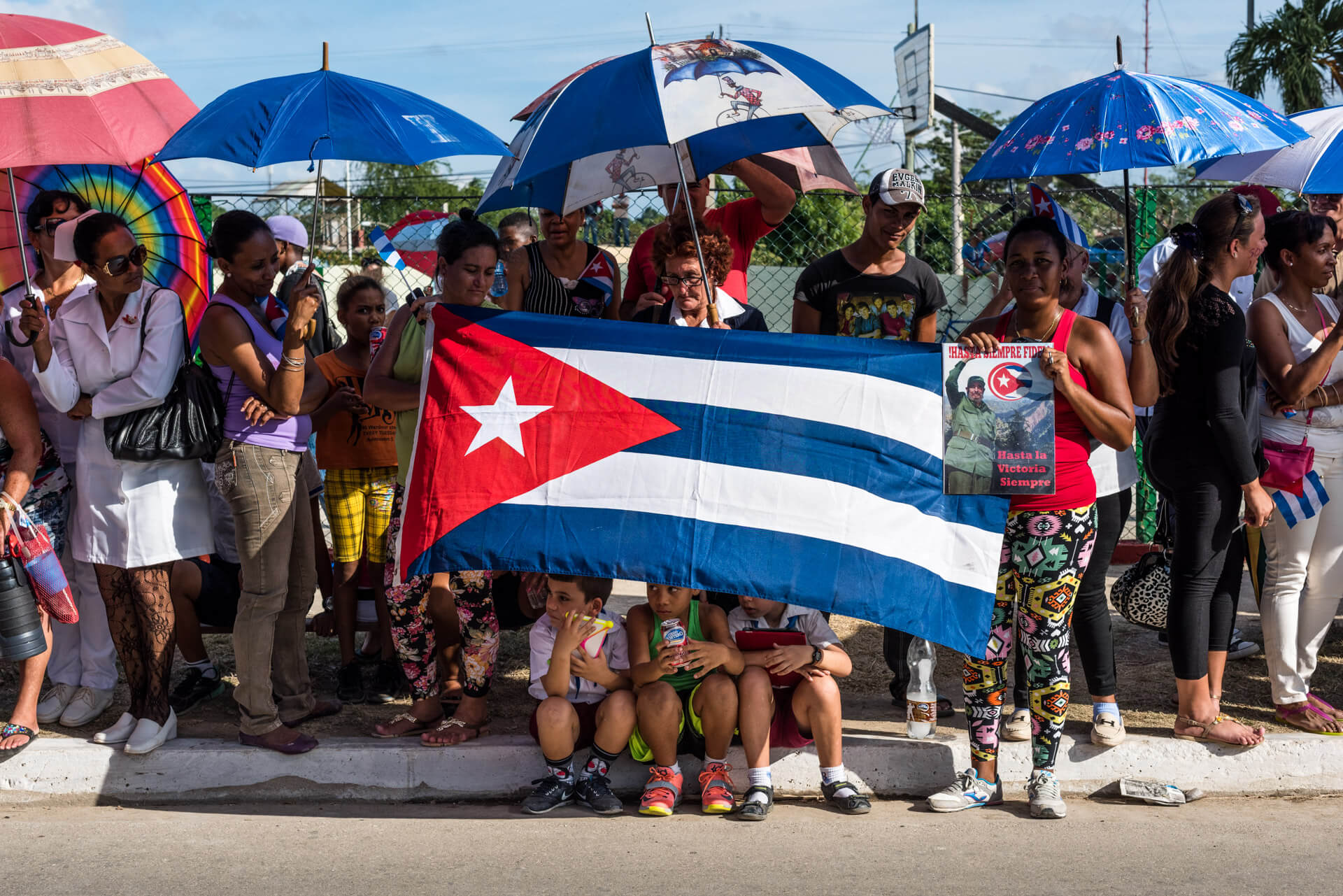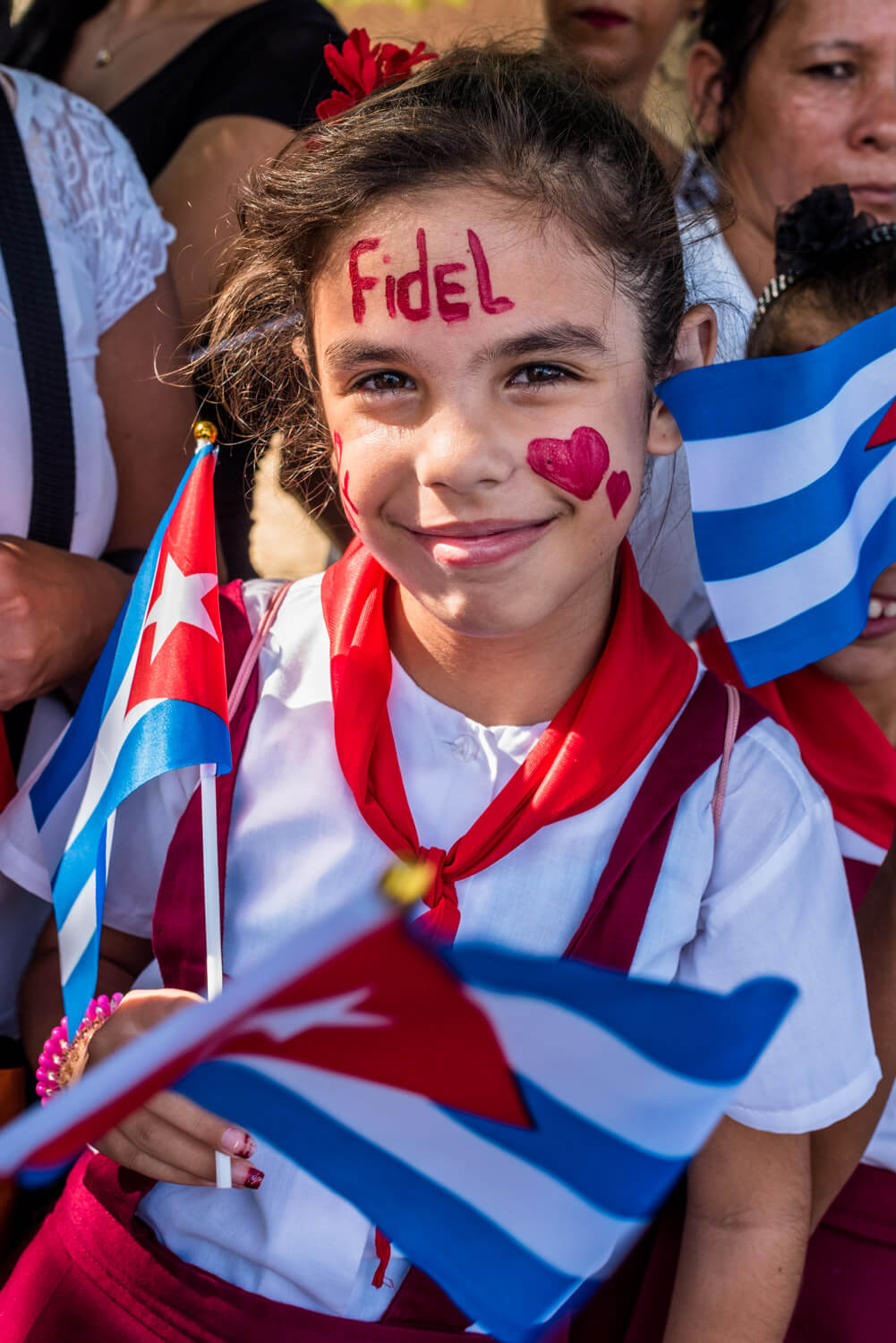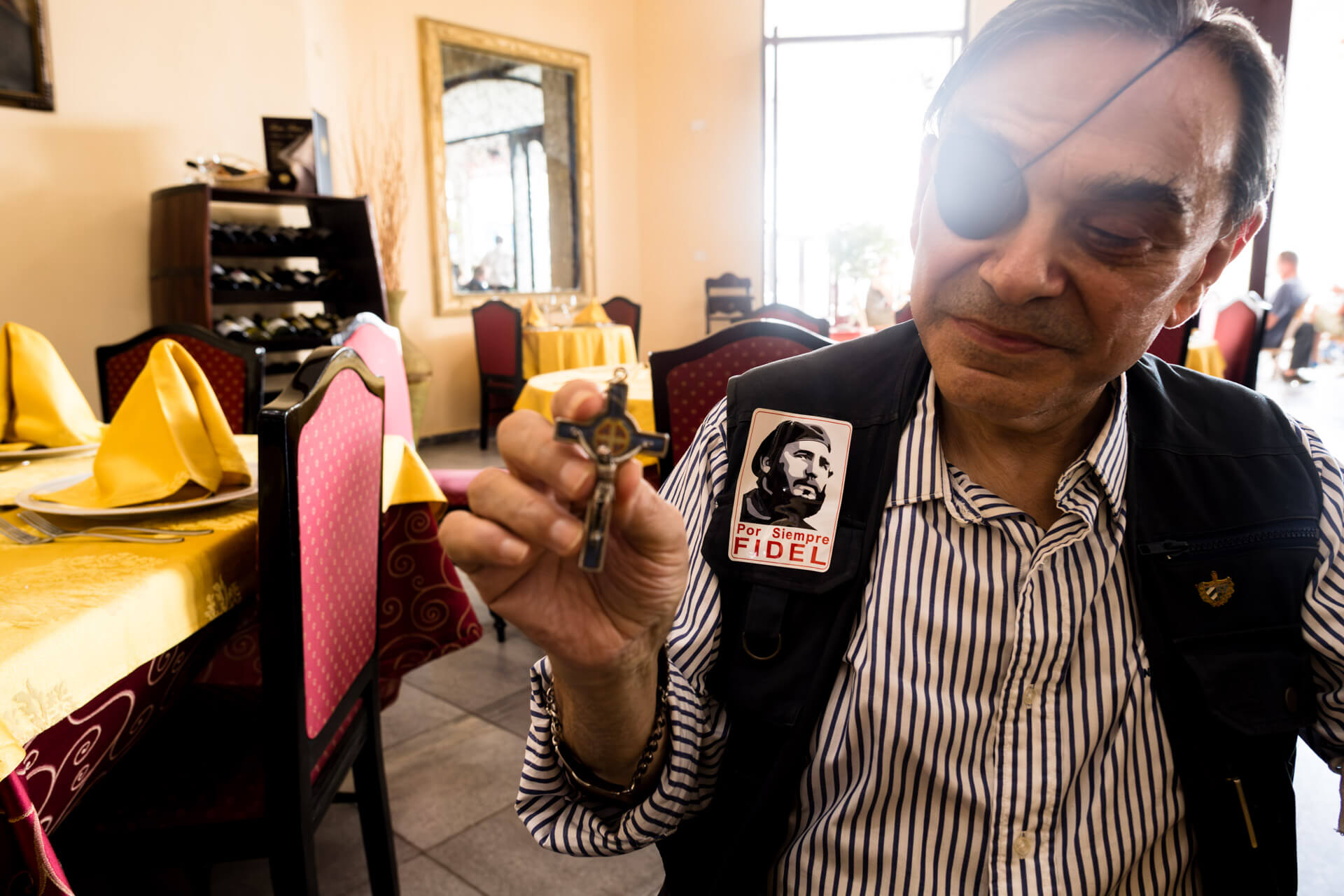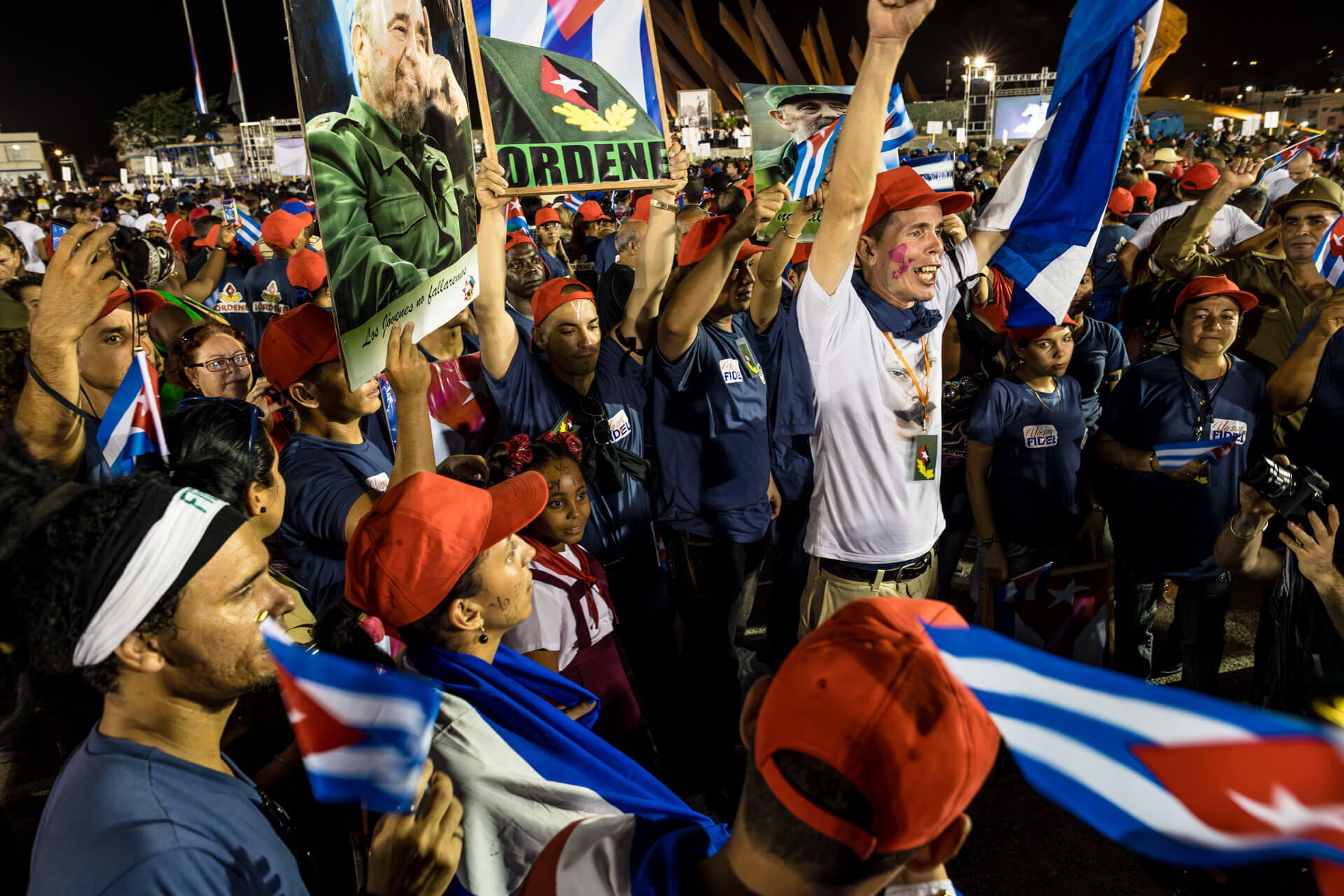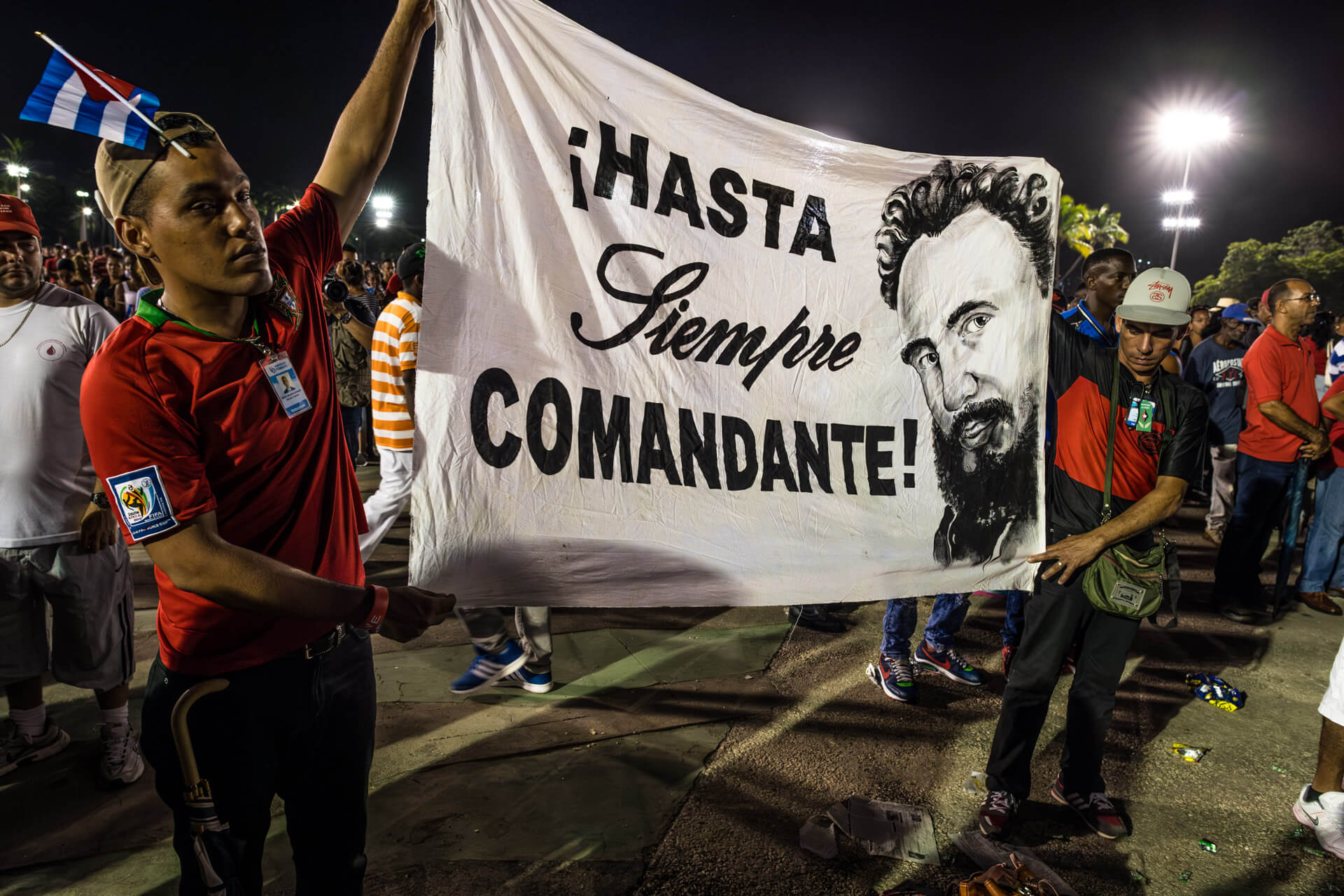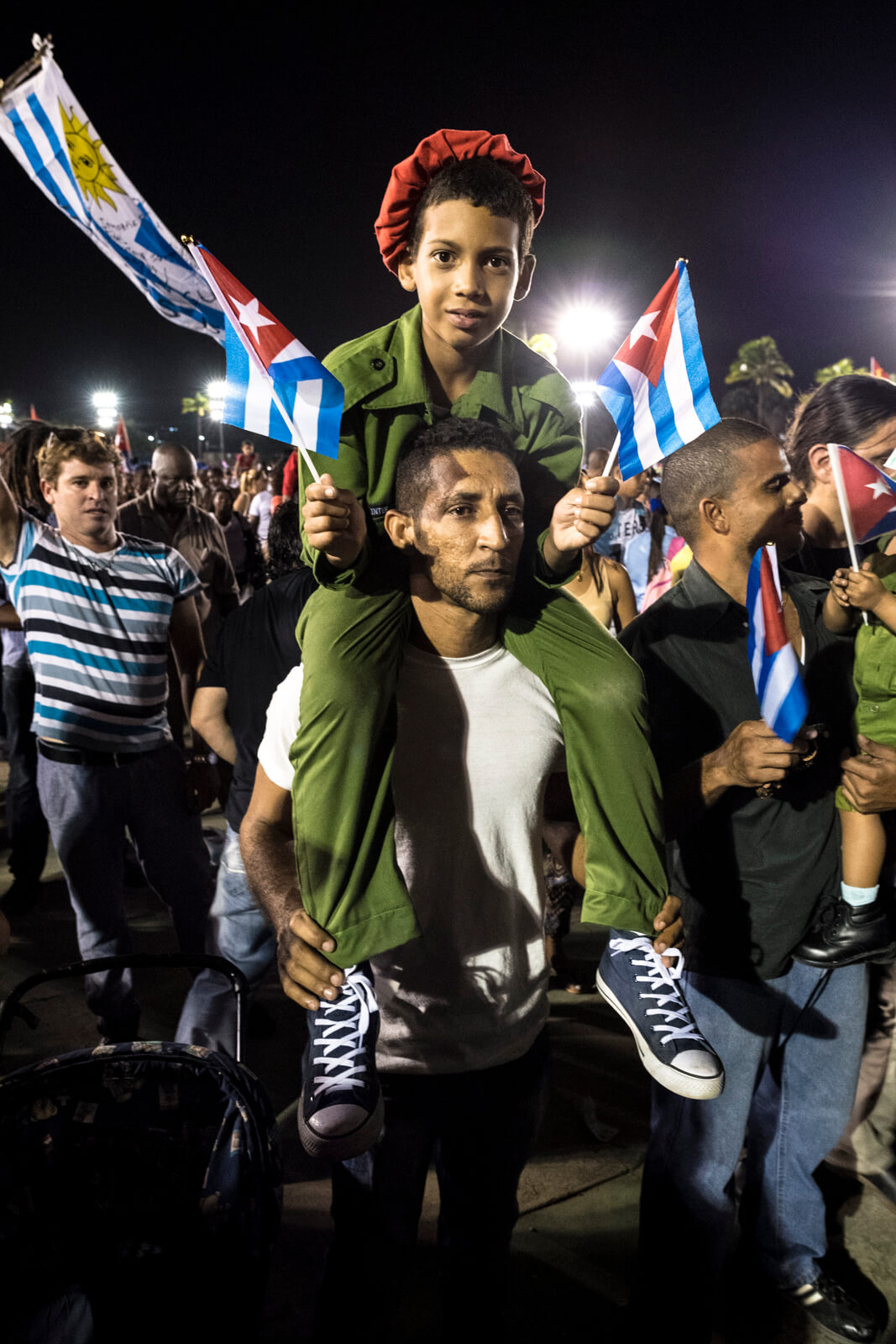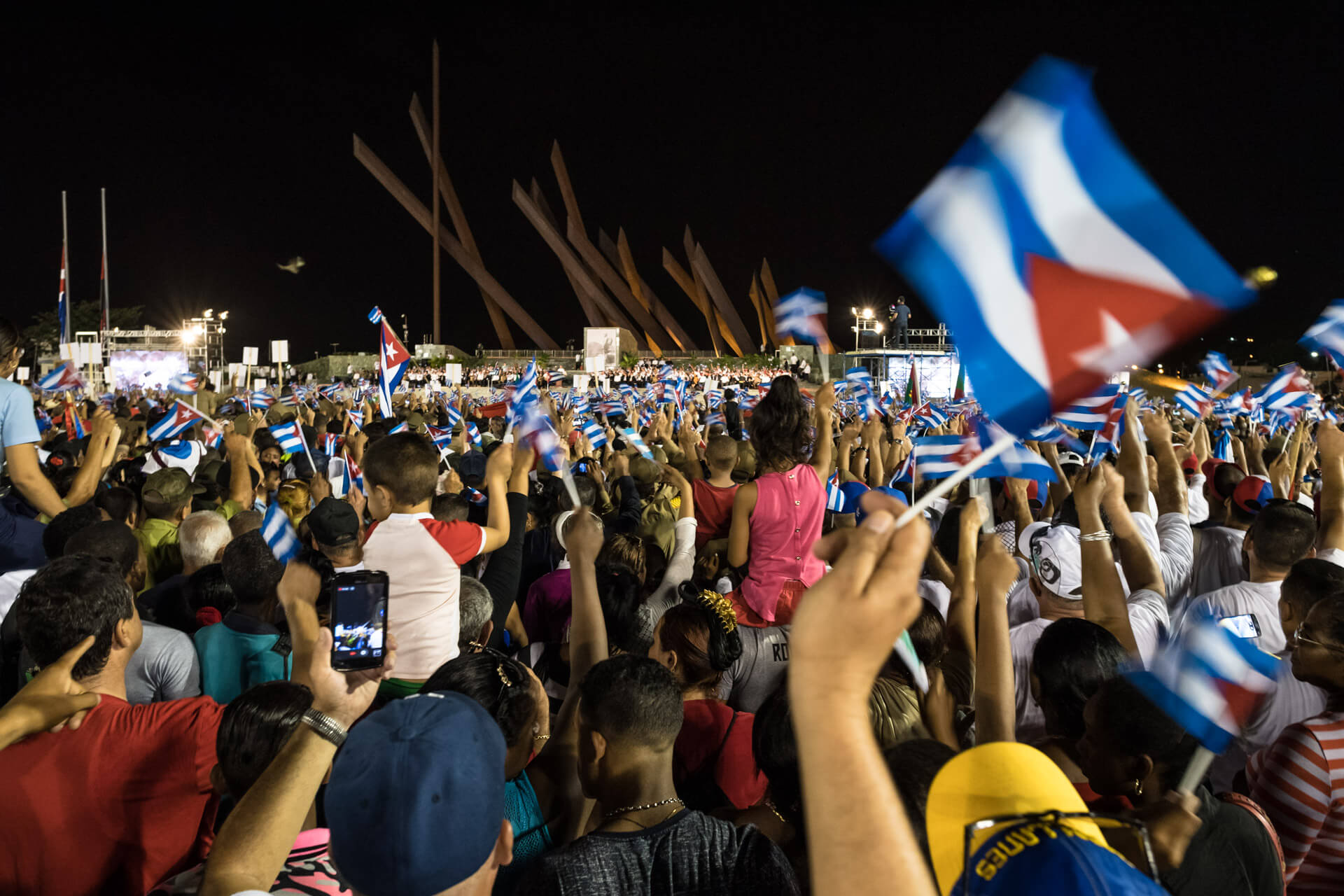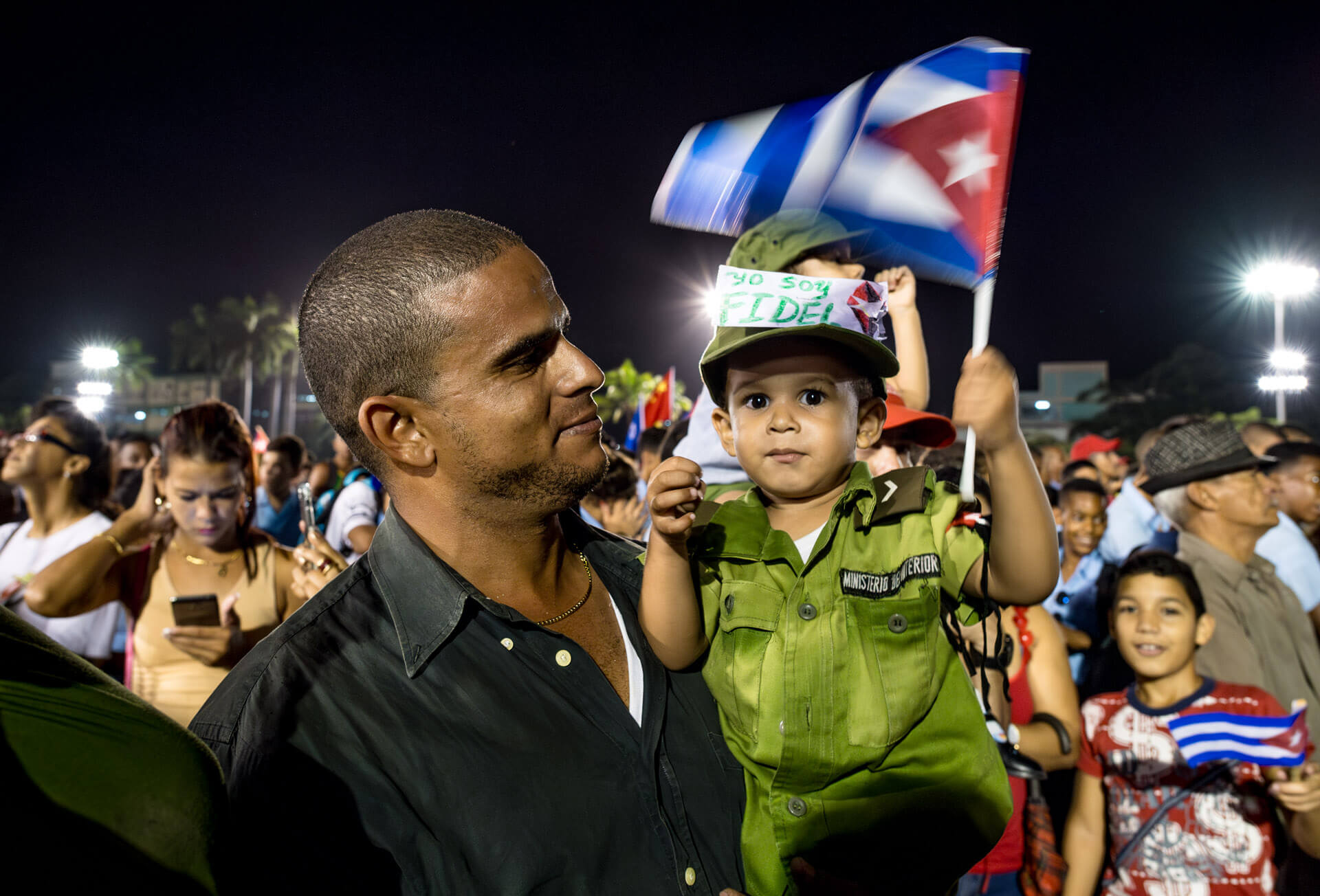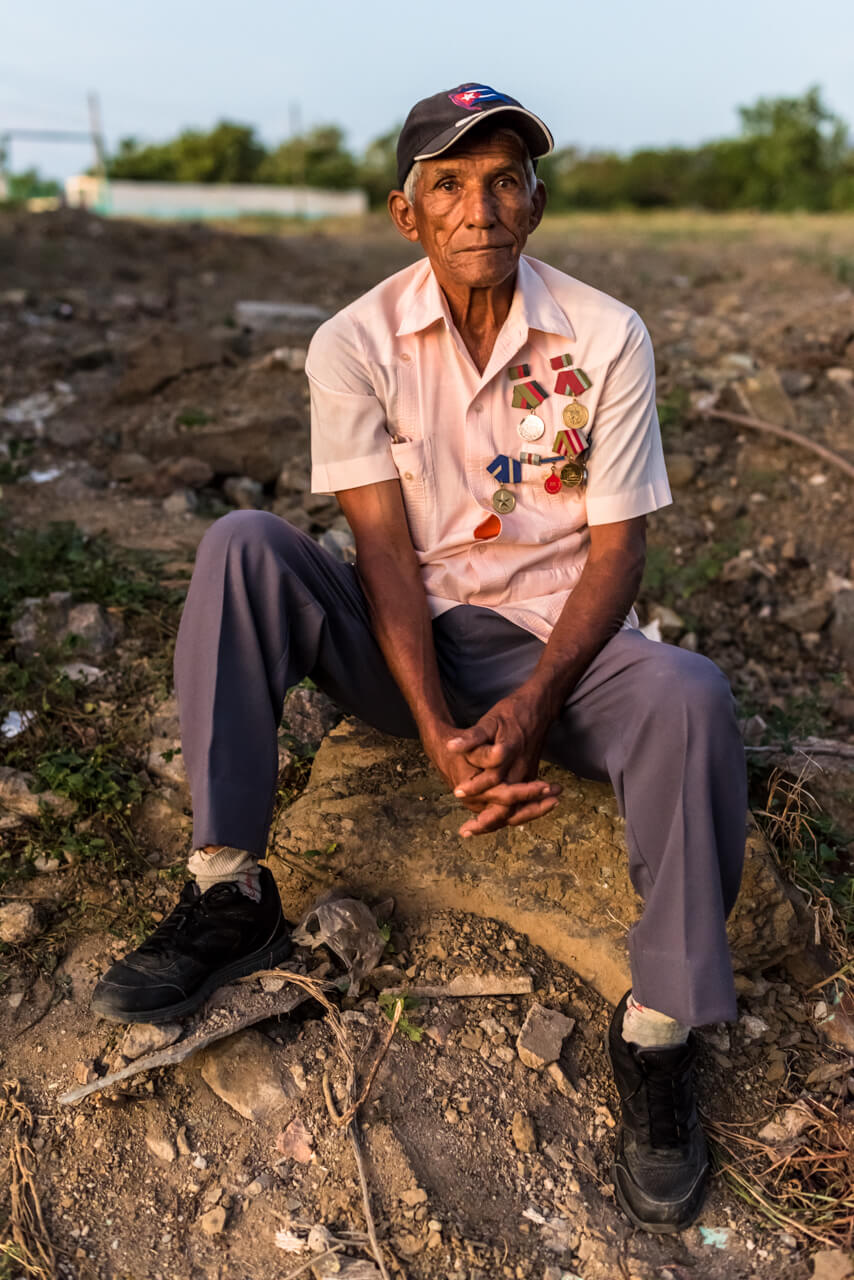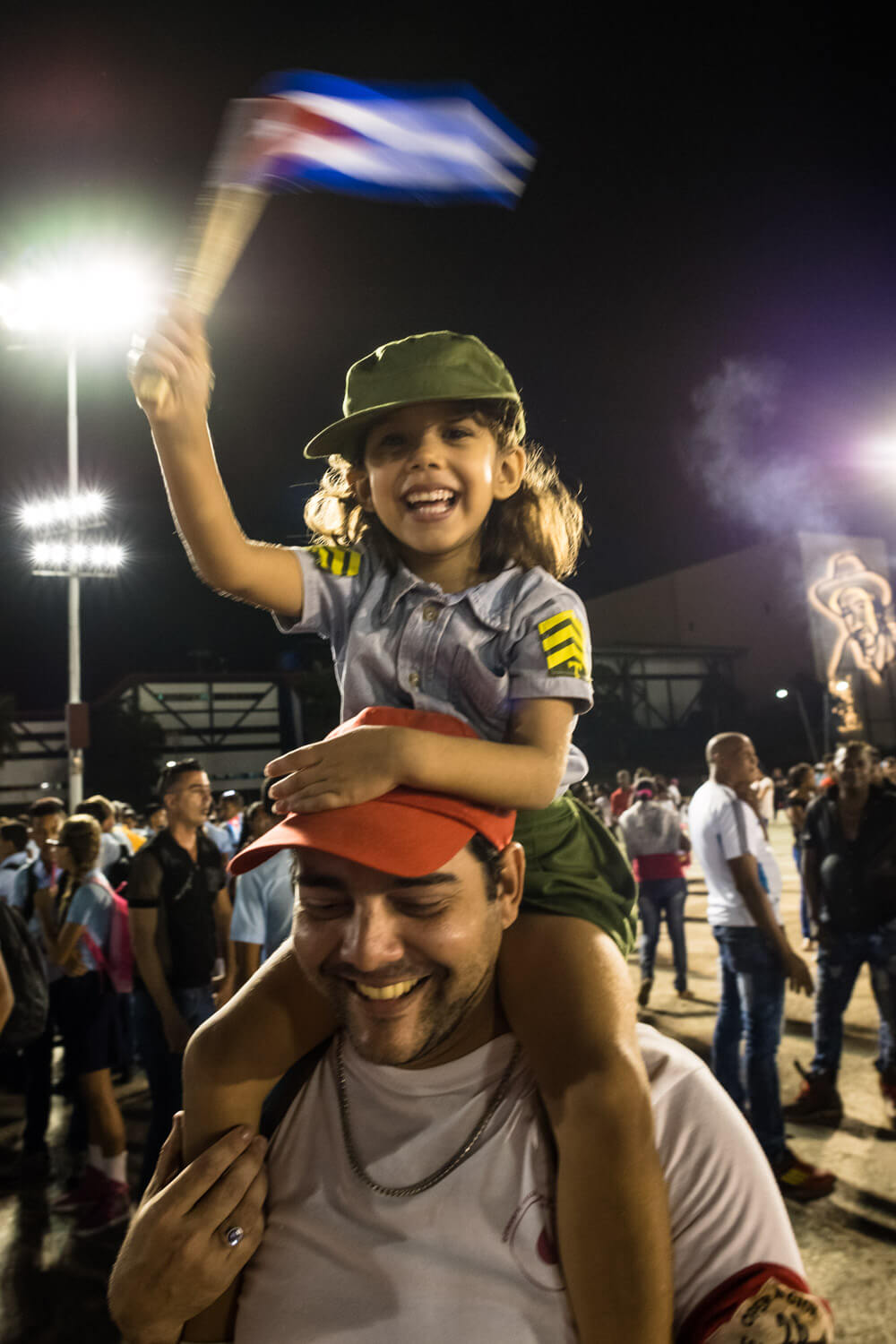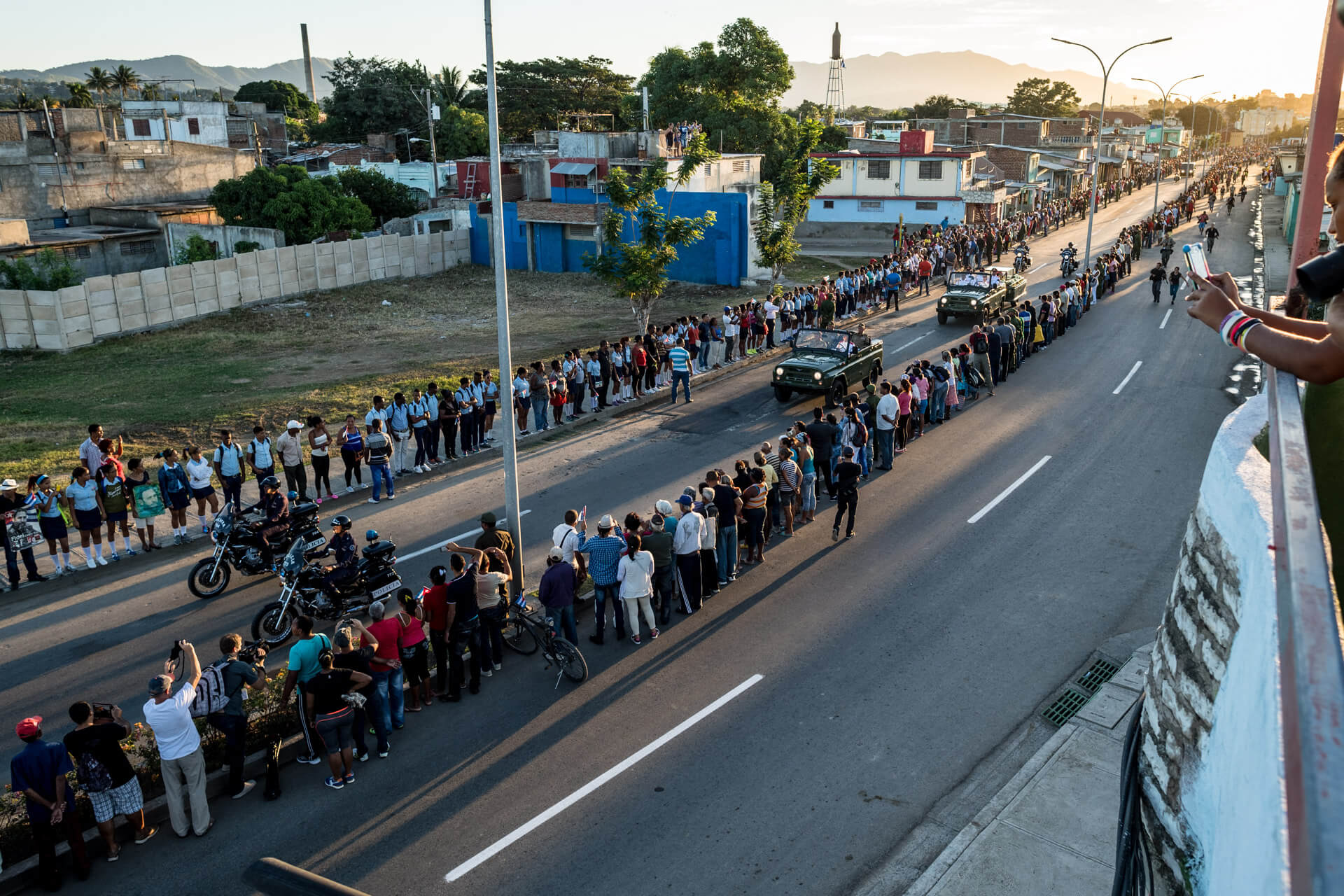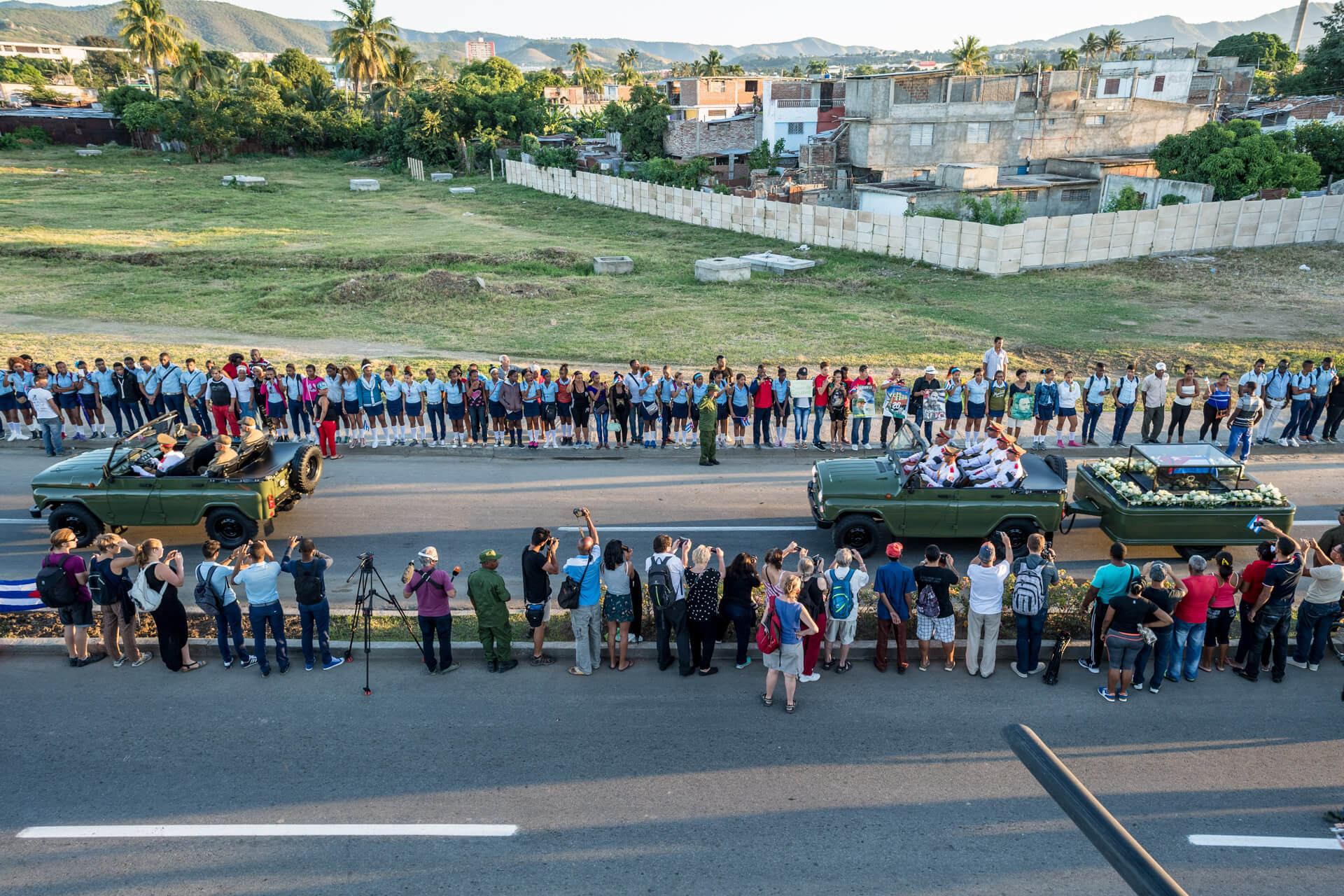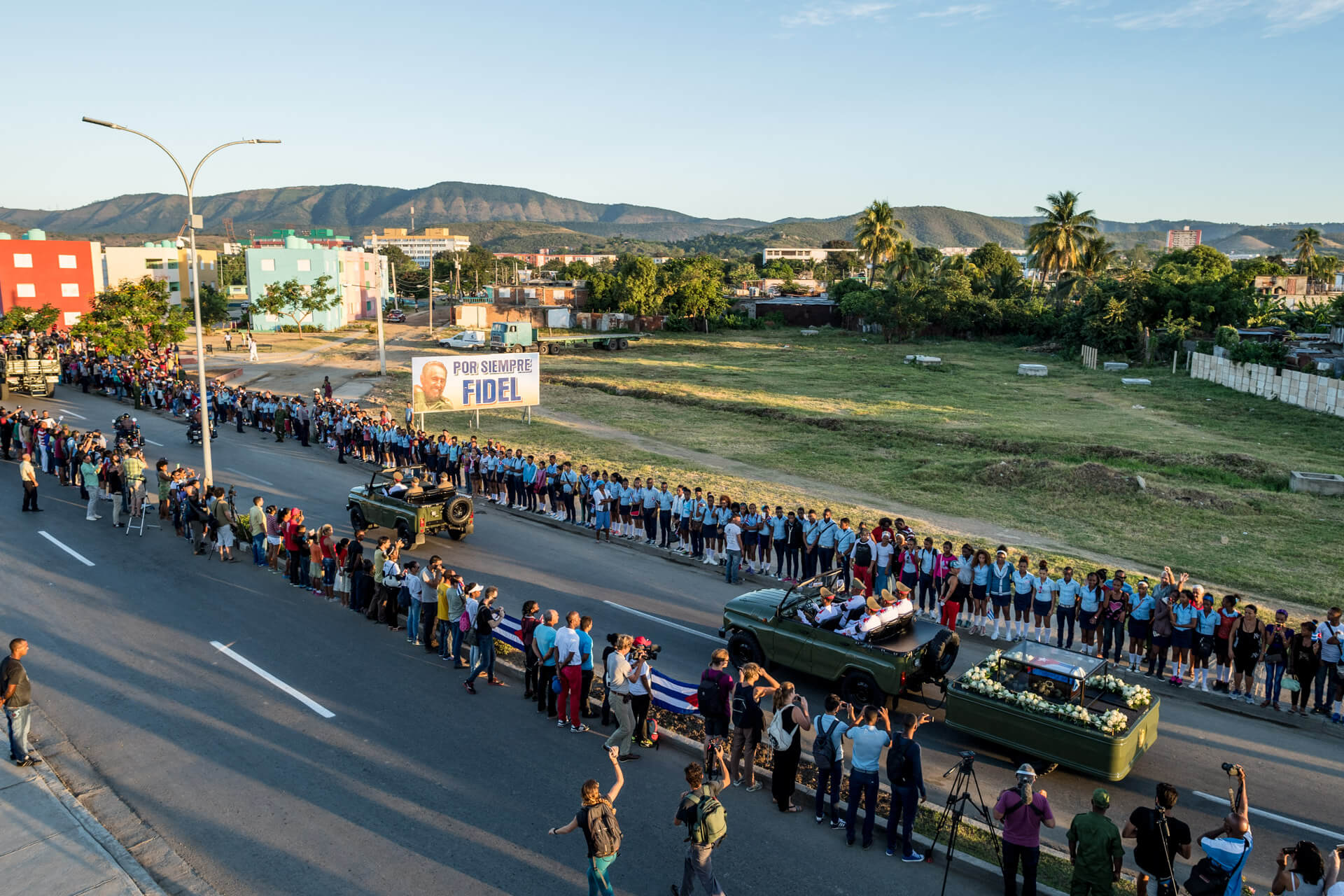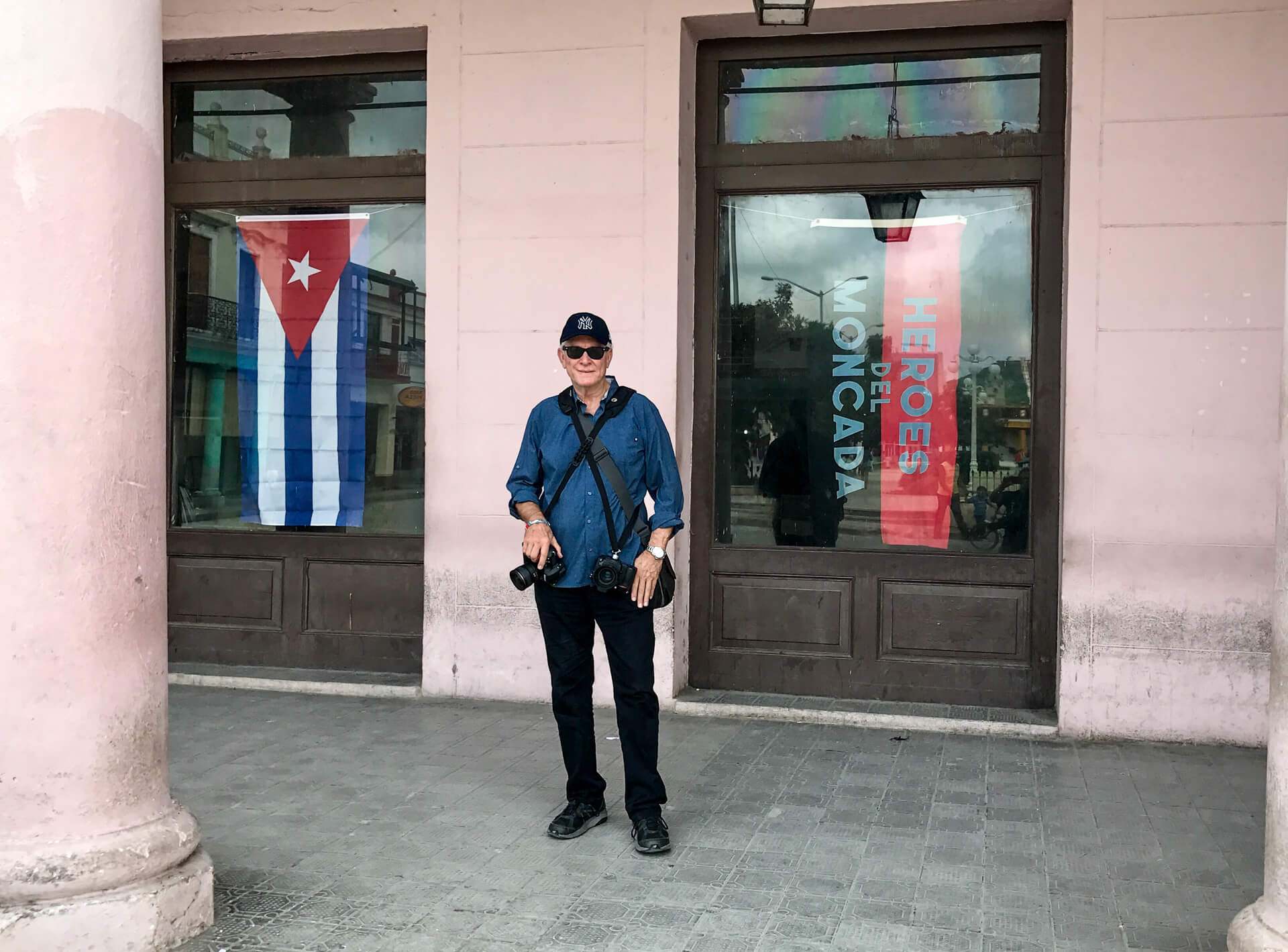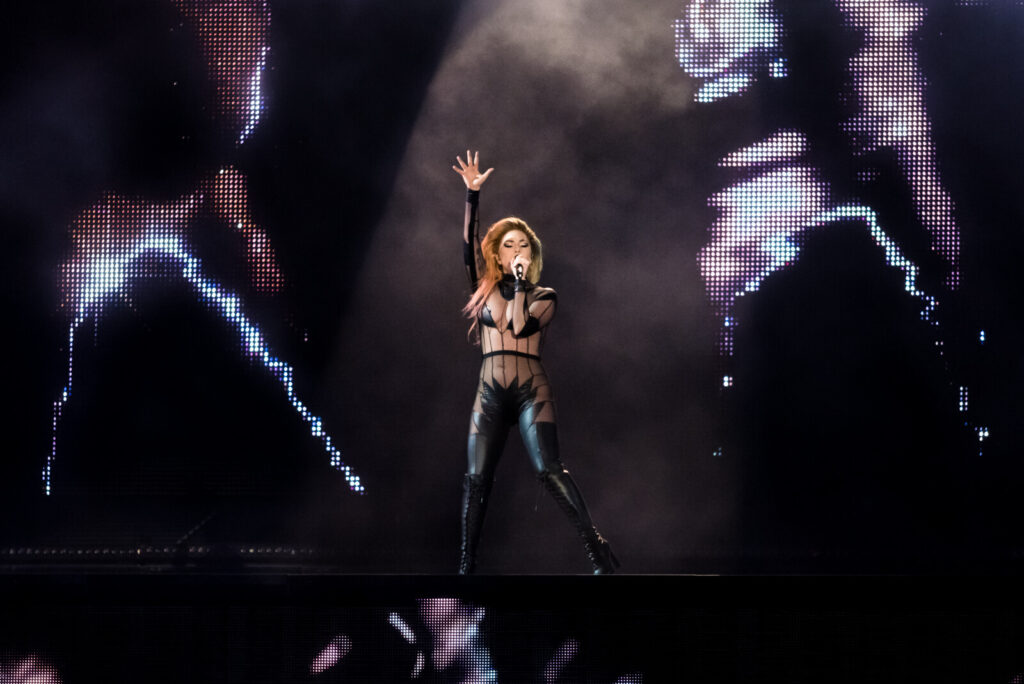Yo Soy Fidel : The Final Journey of Fidel Castro
When Fidel Castro died in November 2016, I flew to Cuba almost immediately. I felt compelled to document this moment in history, not as a political act, but a personal one. Cuba had long intrigued me. I grew up during the Cold War, hiding under my school desk for drills during the Cuban Missile Crisis. The sense of tension, mystery, and silence between the United States and Cuba stayed with me. I wanted to be there, not reading headlines, but walking among people, camera in hand, witnessing history unfold.
What I saw and photographed wasn’t just a country in mourning, it was a country expressing itself in different ways. I followed the cortege carrying Castro’s ashes from Havana to Santiago de Cuba, retracing, though in reverse, the path of the 1959 revolution. Town by town, the motorcade passed through small villages and along dusty roadsides, where people had gathered not only to watch, but to participate. Children perched on rooftops. Farmers in straw hats stood silently. Entire families came out in their Sunday best. Many held handmade signs, some saying Yo Soy Fidel, a phrase that echoed everywhere: painted on faces, on walls, written in marker on shirts.
I was out in the provinces, on the roadsides, in the squares standing with everyday people. What struck me most was their quiet dignity. There was no spectacle, no sense of performance. Just stillness, reverence, and presence. People brought flowers. Some wept. Others simply stood with their hands over their hearts. It felt deeply personal. And when I raised my camera, they didn’t turn away. They nodded. They welcomed the witness. A quiet reverence was in the air.
The journey to Santiago took me through a landscape both raw and beautiful where the motorcade would pass. And when it did, when that small glass case holding the urn, draped in the Cuban flag passed by there was a hush.
What I took away wasn’t ideology. It was a deeper understanding of the Cuban people: resilient, proud, expressive. Even in mourning, there was music. There was rhythm and warmth. There was soul.
That’s what I tried to capture, not politics, but people. Their eyes, their gestures, their devotion, their complexity. It was a journey I’ll never forget. One of history, certainly. But even more, one of humanity.

